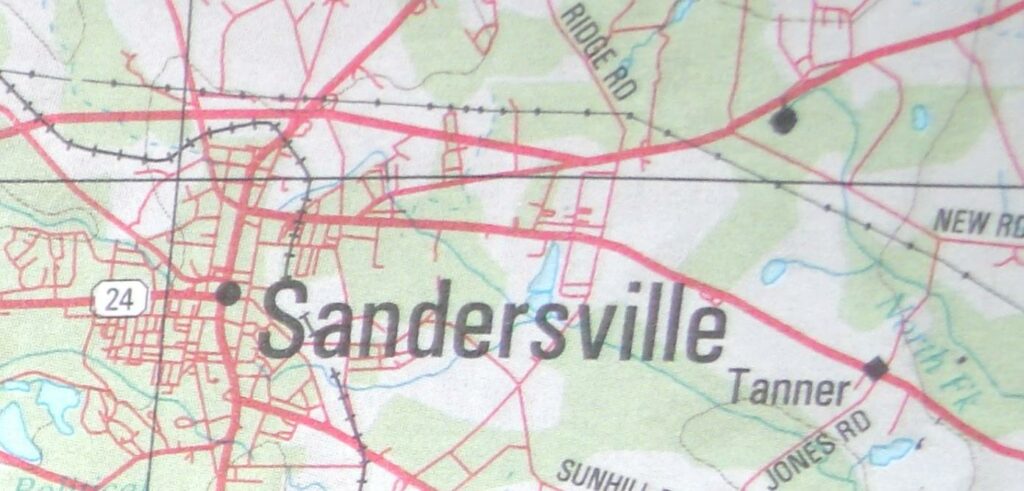
After living in the area of Atlanta, Georgia for many years, Mrs. Perry purchased a home in Washington County near the city of Sandersville. While checking with the County Health Department to have a soil test done before installing a septic tank, she was directed to Mr. Perry to have the test done. During the test, Mr. Perry noticed several sherds of flint on the ground and volunteered to dig the hole for the tank for free if he could keep all of the artifacts he found. Mrs. Perry agreed and, after a time, she became Mrs. Perry.
The land sloped toward a seasonal pond to the West of the area where Mrs. Perry wanted the tank and the soil was sandy. Mrs. Perry had noticed a sand pit at the back of the property where she could easily find arrowheads that were consequently deposited in shoe boxes that have since disappeared. She later poured a concrete slab and built a small barn over the sand pit, not realizing that she was covering the most productive spot for recovering artifacts. As Mr. Perry dug the pit, he encountered a layer of very white sand. He thought it peculiar, but continued to dig, recovering thousands of artifacts.
In all, this amazing site yielded 2091 artifacts, 195 of which were projectile points and blades, 102 flaked tools, 24 ground stone tools, 1 clay pipe, 3 pottery game discs, one mini-ball, and one broken and melted white glass medicine bottle. While sand is not the best soil for maintaining a good stratigraphic record, many things can be still be discovered from the hundreds of artifacts that were recovered over the years and the relative depth of some artifacts.
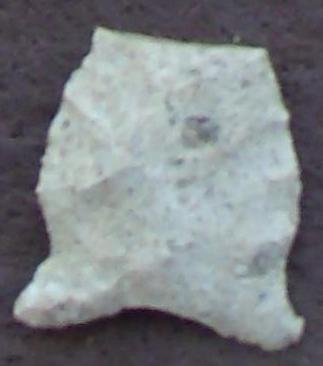



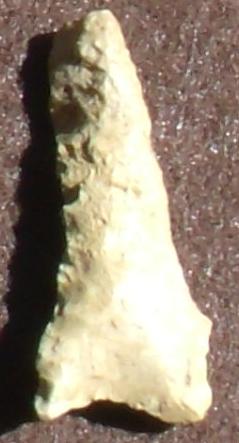
The recovery of seven Late Paleoindian Dalton points marks the earliest evidence of man at the site. Specifically, the Dalton types were One Greenbriar, two Ocmulgee, one Chattahoochee and one Colbert Dalton point and one Colbert Dalton drill. Drill forms made from ancient point types often occurred in later periods as points were recovered by the late cultures and made into drills. The distribution of these points seems to mirror the distribution of earlier Paleoindian point types along Georgia’s river beds. These points may have been used as projectile points or as blades. Their use as blades is easily identified by the presence of resharpening. Many archaeologists including the late Calvin Jones, a Florida State archaeologist during the 1990’s, believed that projectile points were not resharpened or reused once they had found their intended mark. I personally have recovered several points from fire pits that were apparently left in the meat while it roasted over an open fire. Each of these point types is estimated to date to about 10,000 years Before Present (YBP).
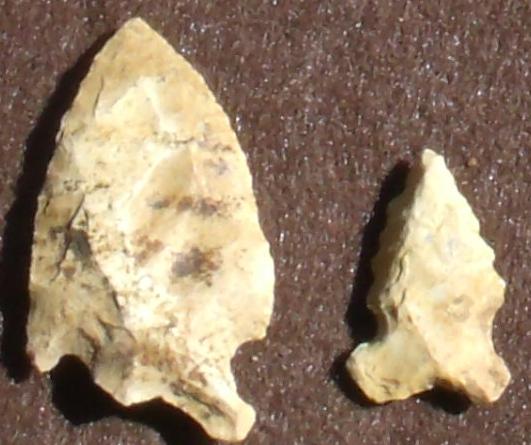


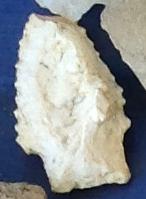

The Early Archaic period occupation at the site did not contain large numbers of side-notched points with only 4 examples of the Big Sandy type. Both Dalton and Big Sandy points are believed to generally date to about 10,000 years BP. One unusual recovery during this period was an example of a Boggy Branch type that is rarely found east of Droughty County, Georgia. The only other recovery of this type east of the Ocmulgee River that I know of came from Wilkerson County. Most collectors believe these points date with the Kirk Serrated points at about 8,900 to 8,000 years B.P.
The larger occupation during the Early Archaic period began some time after the emergence of the side-notched points with early corner-notched points like the Palmer and subsequent Kirk Corner Notched points. The Palmer’s suggested age dates to about 9,000 years B.P. with the Kirk Corner Notched point coming along about 1,000 years later. One indication of their early date is that the Palmer and many examples of early Kirk points retain the characteristic of a rubbed or smoothed base.
The development of the Early Archaic period projectile points and knives continued with stemmed points like the Kirk Serrated (2 examples), Wacissa (1) and LaCroy (1) types found at the site. The number and variation of these hafting developments present at this site suggest a fairly lengthy occupation or at least a seasonal occupation of the site over a fairly extensive period of time.

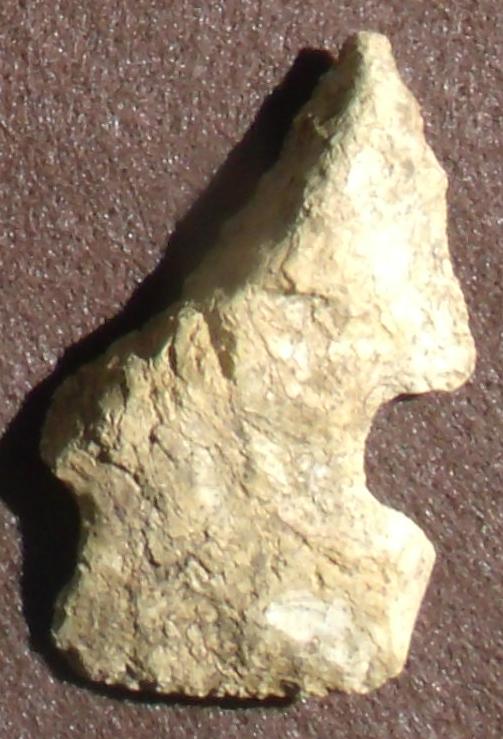
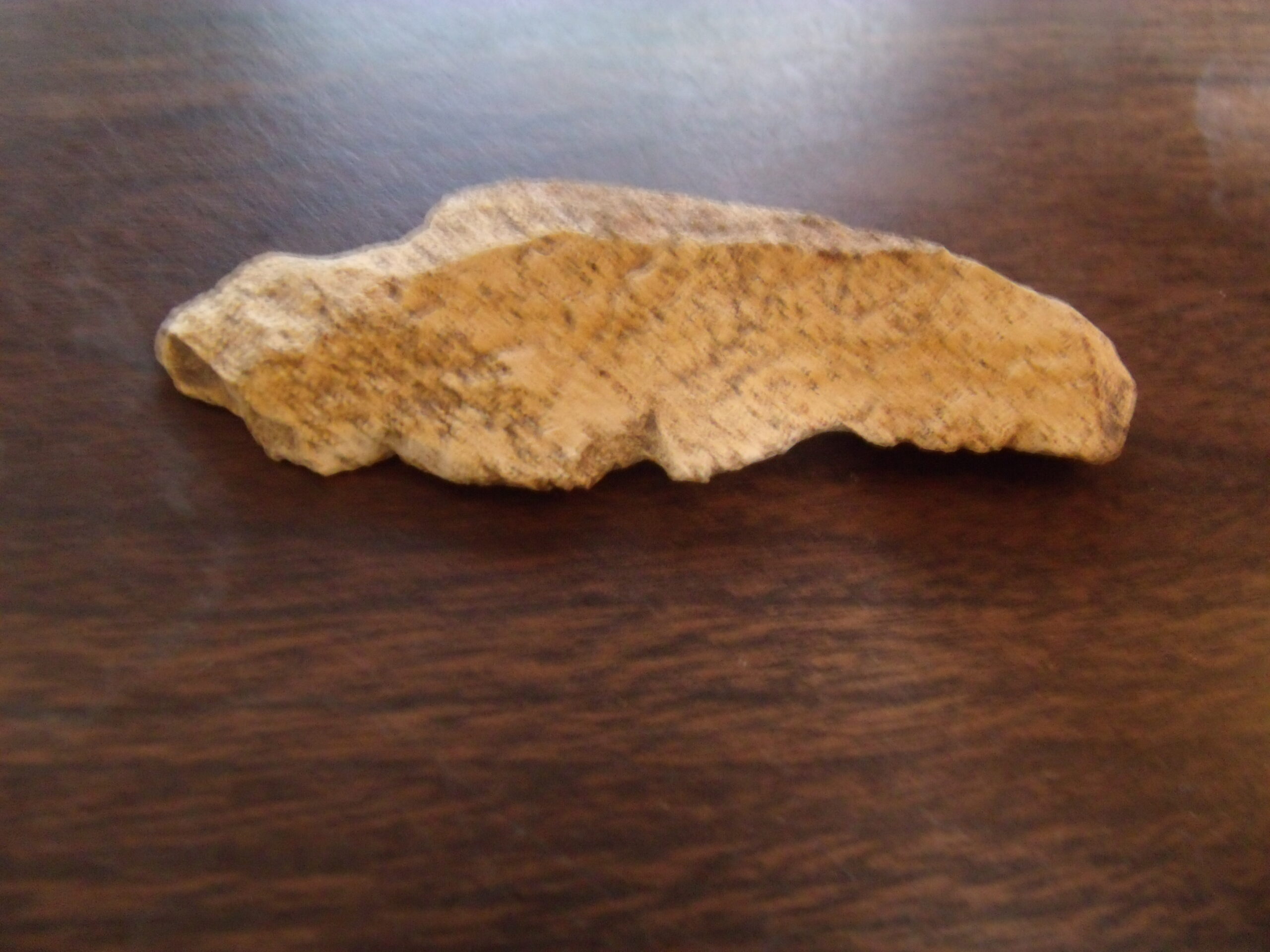
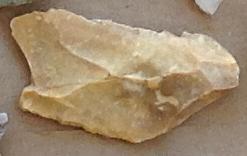
The presences of some tool types specific to the Early Archaic period were also recovered from the site. The Edgefield Scraper (5 examples) was a tool designed to endure great pressure in cutting bone. The 60 degree angle of its bevel and its heavy hafting area both suggest this kind of use. Edgefield Scrapers are believed to date between 10,000 and 9,500 years B.P. A second tool type that is believed to have been used during this period was the Unifacial Knife (2 examples), sometimes called the Paleo Unifacial Knife, because of its frequent association with Paleoindian points. These large blades consisted of a single flake, often with a ridge along one side of the knife similar to the much smaller and later Prismatic blade. The cross-section of the blade is plano-convex with pressure flaking occurring along all edges of the ridged face of the blade.
Other tool types known to belong to the Early Archaic period include side-scraper (17 examples recovered) that was used in hide preparation over thousands of years. They were first named at the Stanfield-Worley site where they were identified as an older tool type. This proved to be true as they were later recovered from the pre-Clovis layers of the Cactus Hill site. Like the Deep Creek site in Glasscock County, this site seemed to feature fairly intense occupations in multiple archaeological periods. The repeated presence of side-scrapers throughout several archaeological periods demonstrates the long period of use associated with this tool type. The Central Georgia Surface Survey recovered 109 of these scrapers indicating that they were a fairly common tool. Jerald Ledbetter’s research at the Mill Branch sites indicated that these tools were most closely associated with a domestic setting and kitchen middens.
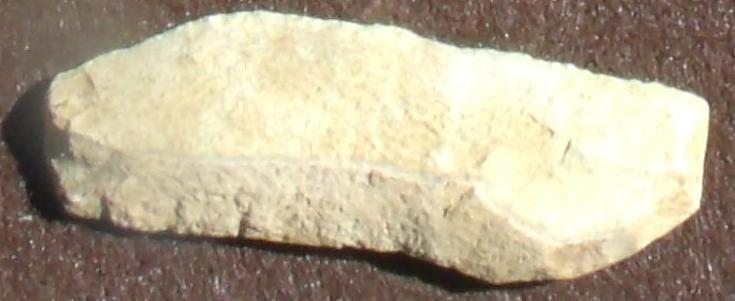
The use of the “Prismatic Blade” name seems to belong to Bennie C. Keel from his work at the Garden Creek site where he recovered 79 examples. Keel described these blades as generally parallel-sided with one or more medial ridges on the dorsal surface. A well defined striking platform or bulb of percussion is present on at least half of the examples. Striking platforms showed slight grinding in only a few cases indicating that cores were not often ground, but rather natural plains were used to strike flakes. The mid sections of the blades showed the typical ridged backs and parallel sides. The terminal ends were rounded and many had cortex on the ends. A few examples had a single ridge on the dorsal surface, but most had two or more ridges.
The definition given by Jerald Ledbetter (1995) for “blade-like flakes” seems to include these blades along with other similar long reduction flakes. Ledbetter’s definition gives a rule of thumb that the length of the blade is at least twice as long as its width. He describes them as long, narrow, thin flakes characterized by the presence of a dorsal ridge parallel to the long axes of the flake. Keel also mentions the presence of use ware along the edges, a characteristic that he mentions as not being present on the examples he recovered at the Garden Creek Mound 2 site. Keel’s examples from the Garden Creek Mound 2 site dated between 200 and 400 A.D., but this seems to represent only the very recent usage of this tool form. Many of the examples shown above are much older and come from the Clovis and pre-Clovis layers of the Topper, Cactus Hill, and Gault sites.
The examples recovered by Ledbetter from the Mill Branch site 9WR4 were made of chert while those from 9WR11 were made from local blue-green quartzite. The Mill Branch site examples suggest a Late Archaic context. Joseph McAvoy (1997) also mentions the presence of “edge worked and edge used flakes” below Clovis points at the Cactus Hill site in Sussex County, Virginia. The recovery of these blades at the Sandersville site at 30 inches from the surface seems to indicate their association with earlier cultures rather than those recovered by either Ledbetter or Keel, but without stratigraphic or carbon dated evidence it is impossible to tell.
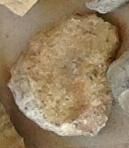
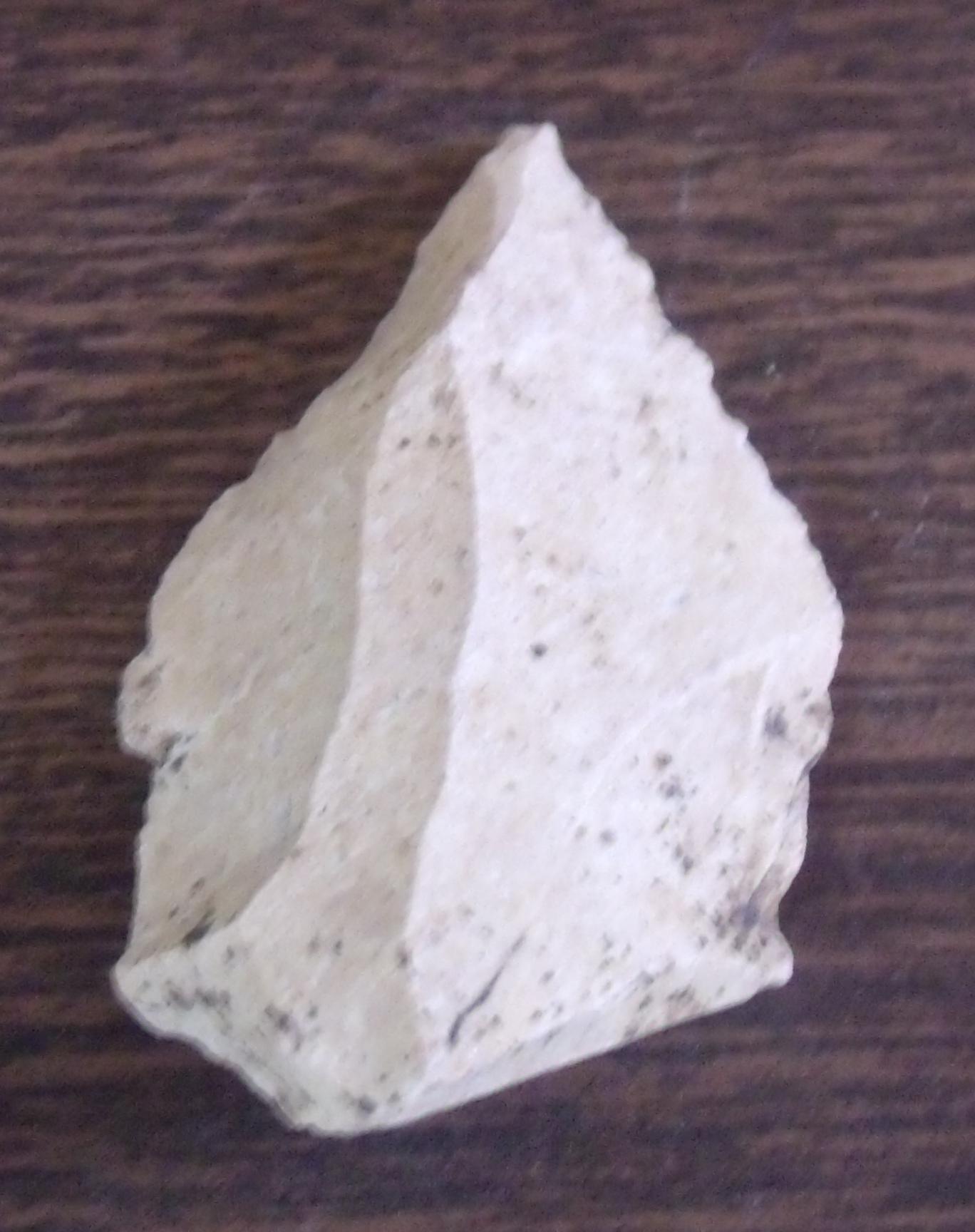

Other hide-working tools included triangular end scrapers (12 examples), thumbnail scrapers (3), chisel-end scrapers (4), pointed-end scrapers (1), and hafted end scrapers (8), all of which share a similar antiquity and extended pattern of use.
THE MIDDLE ARCHAIC PERIOD
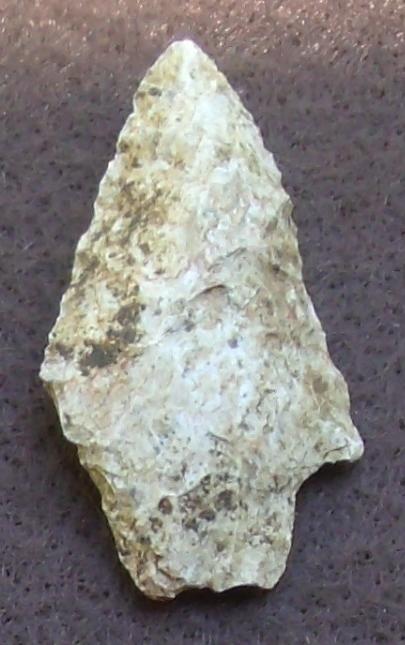
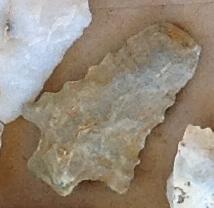
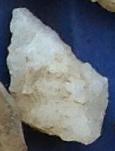
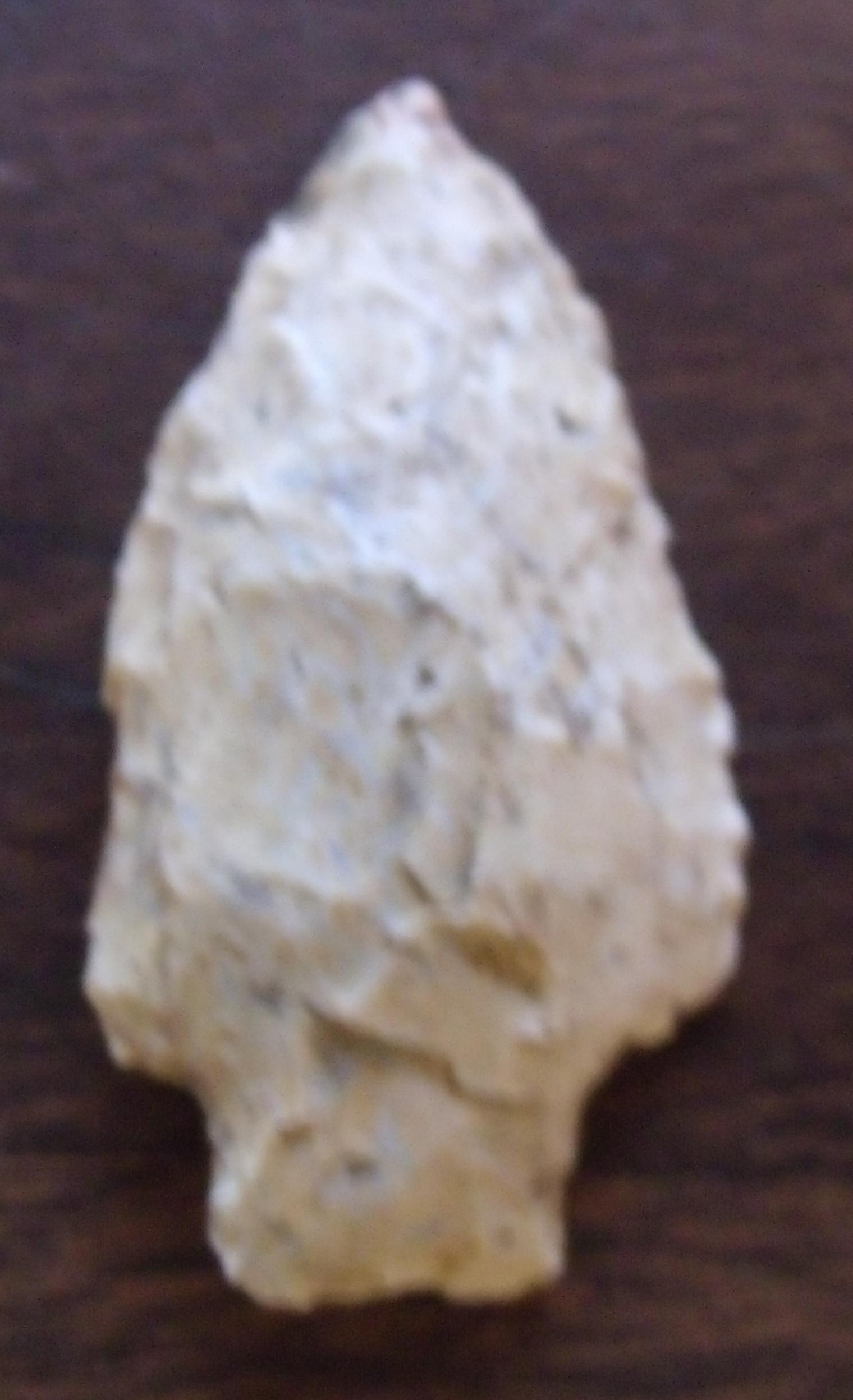
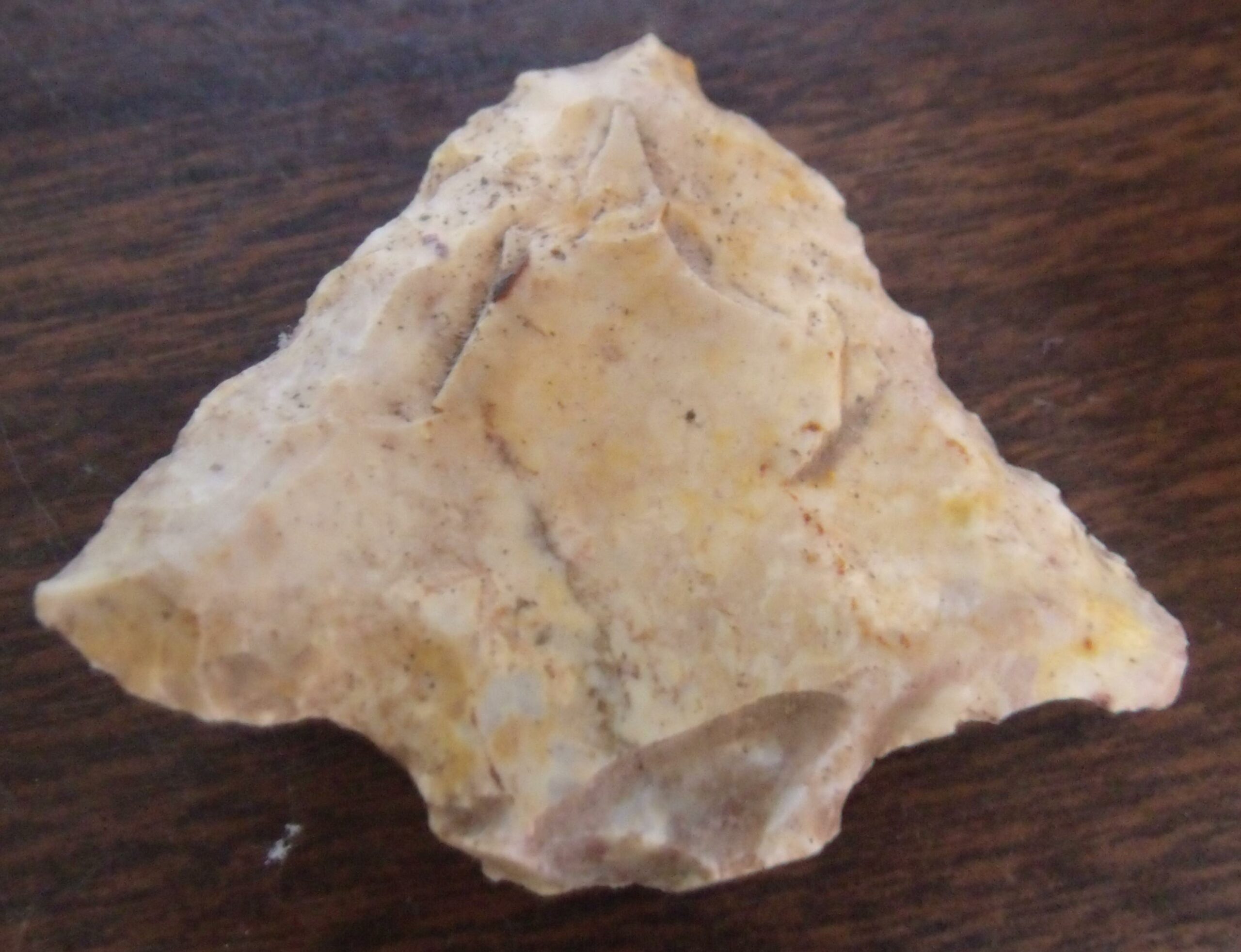
A total of 56 Middle Archaic projectile point types were present at the site. These included 1 Newnan point, 24 South Prong Creek points, 14 Morrow Mountain I points and 13 Morrow Mountain type II points, 3 Otarre points and 1 Abbey point. The most frequently encountered point types were 24 South Prong points and a total of 27 Morrow Mountain I and II points.
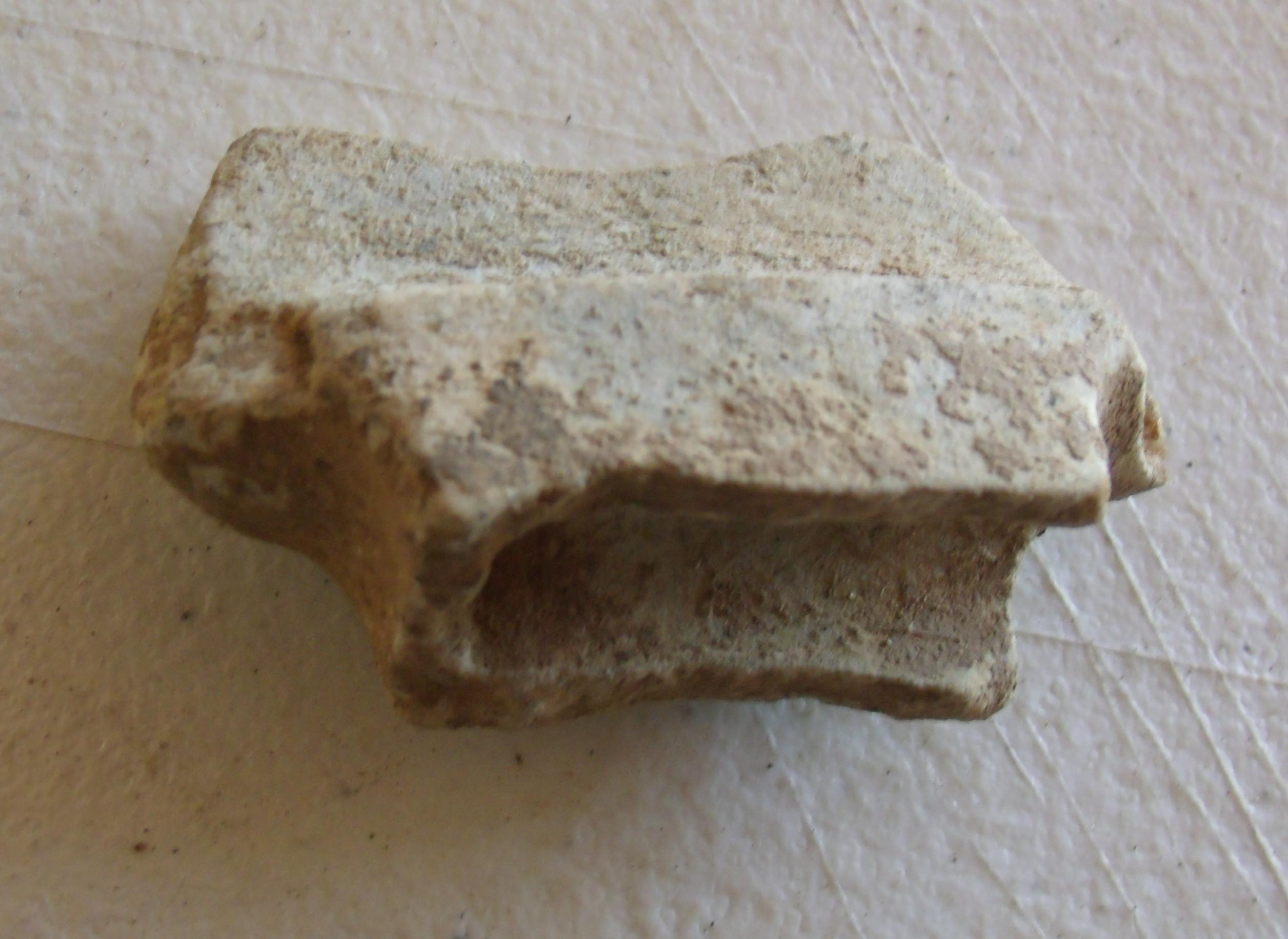
Ground stone tools that might be associated with this period include one bannerstone fragment. The absence of other tool types like grinding stones, hones, or pestles might suggest that the site was used as a work site, perhaps a wood-working site, given the large serrated South Prong Creek points present rather than a camp site during this period.
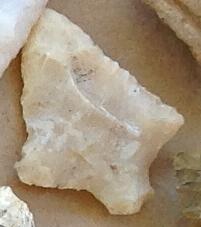

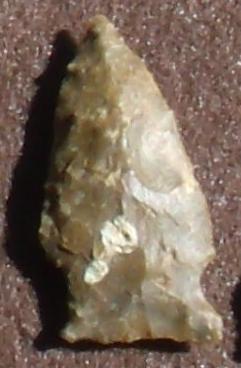
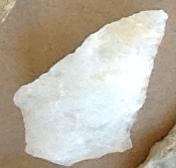
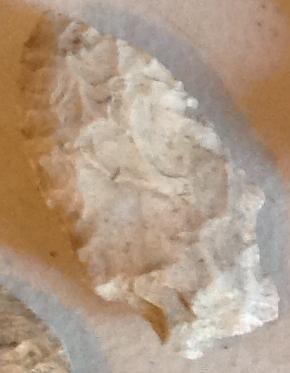
The Late Archaic period saw a resurgence of activity at the site with a total of 78 projectile points, 16 drills, a Screven Scraper, 6 boiling stones and a variety of other small tool types. Added to that, a total of 240 fiber-tempered pottery sherds were recovered. A picture of village life begins to emerge. Not unlike many of the Late Archaic sites in Central Georgia, the Elora (29 examples) and Savannah River point (10 examples) types emerge as dominant types. There were also 10 Allendale points, 8 Pickwick points, 1 Ledbetter point, and 3 Bascom preforms.

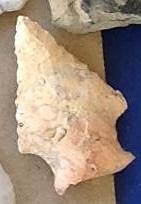
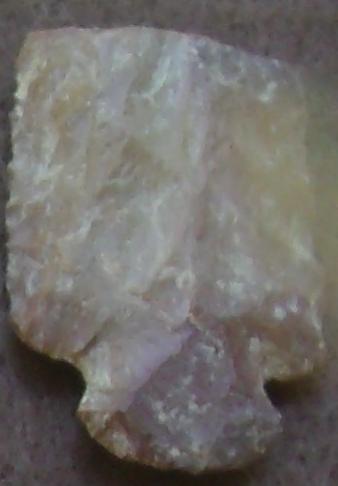

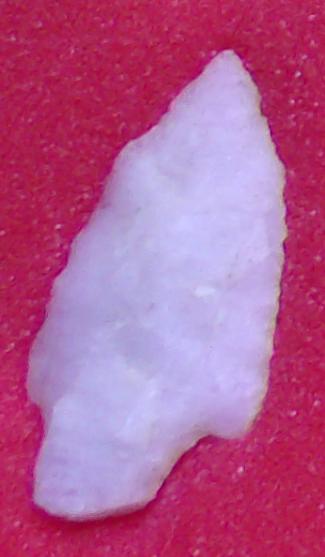
It is clear that the larger blade types were in vogue during this period. A variety of other point types that all date to the Late Archaic period include 5 Lafayette, 1 McIntire, 1 Paris Island, 8 Swannanoa, and 1 Marion round out the blade types.

The Benton Broad Stem point pictured above was also recovered at the site. It is a very thin, beautiful Late Archaic point that is made of gray chert found in the Tennessee region and other places. The Benton Broad point, named for Benton County, Tennessee, has a broad stem, but the Benton Broad Stem point has an even broader stem. It is a medium to large point type measures as much as 66mm in length, 32mm wide at the shoulders, and 28mm wide at the stem. These points average about 7mm thick. These points date with the Buzzard Roost points from 6000 to 4000 years B.P.
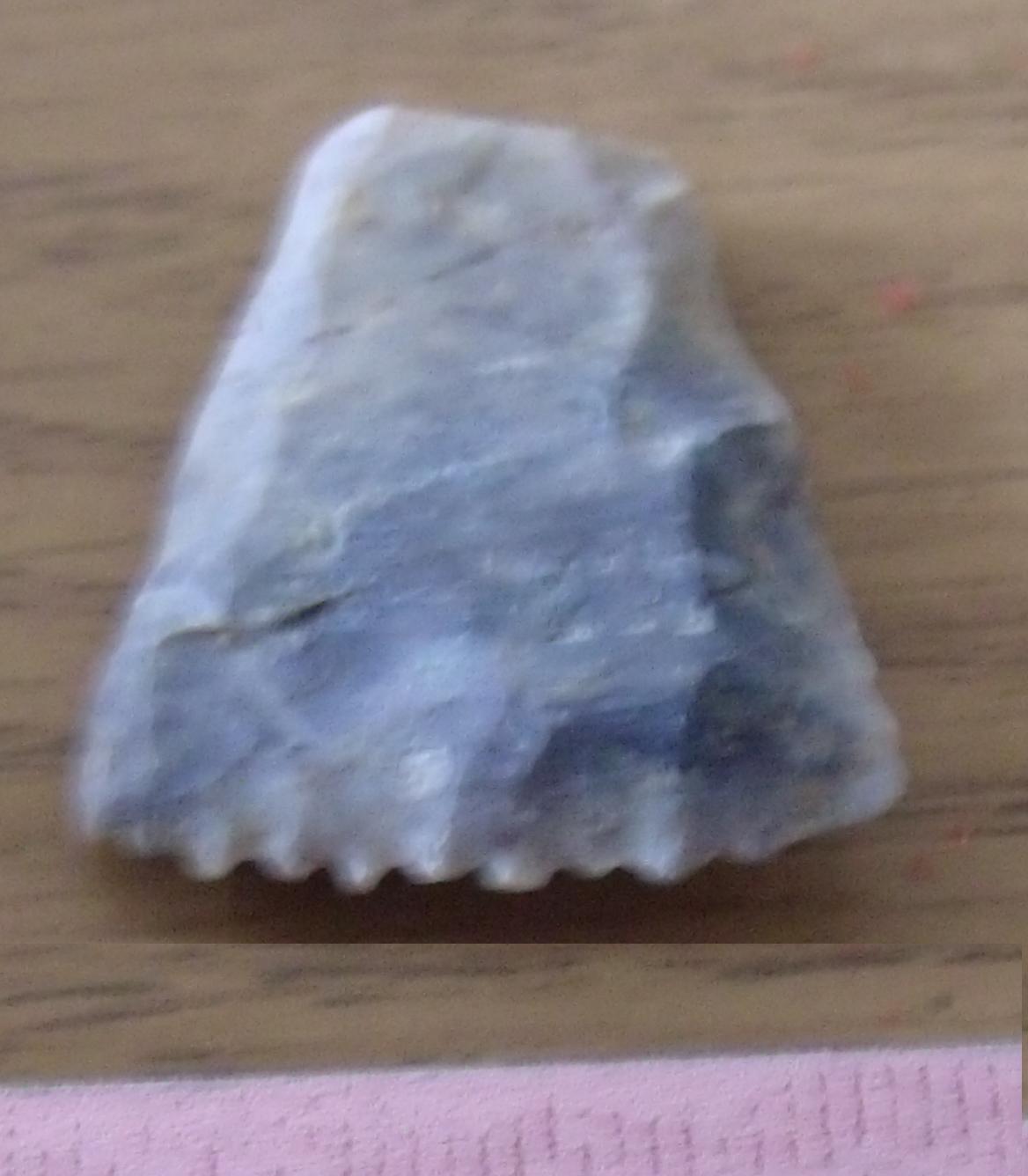
Of the tool types mentioned above, the Screven Scraper is most noteworthy. Many of these scrapers have been recovered by collectors in central Georgia, but they had not been named until Mr. Charles Ray recovered one example in Screven County, Georgia. He promptly named it the “Screven Scraper.” Jerald Ledbetter recovered one example of this tool from the Mill Branch site (9WR4) along with three other similar examples. He categorized the tools as “broad, flat base bifaces,” noting that the sides of the blades were straight to triangular with the widest portion of the blades along the base. The blades were bi-convex in cross-section.
Three of the examples Ledbetter recovered were lanceolate in shape and were rounded or dulled at the distal end. The fourth example from the site was unique in that it was well-made and deeply serrated along the basal edge. The tool was recovered from the South Block of the site and appeared to be associated with the Late Archaic occupation at the site. Mr. Danny Greenway has noted that these tools have little to no patina on them. He, too, has recovered them from a Late Archaic context, but suggests that their use may have extended into the Early Woodland period.

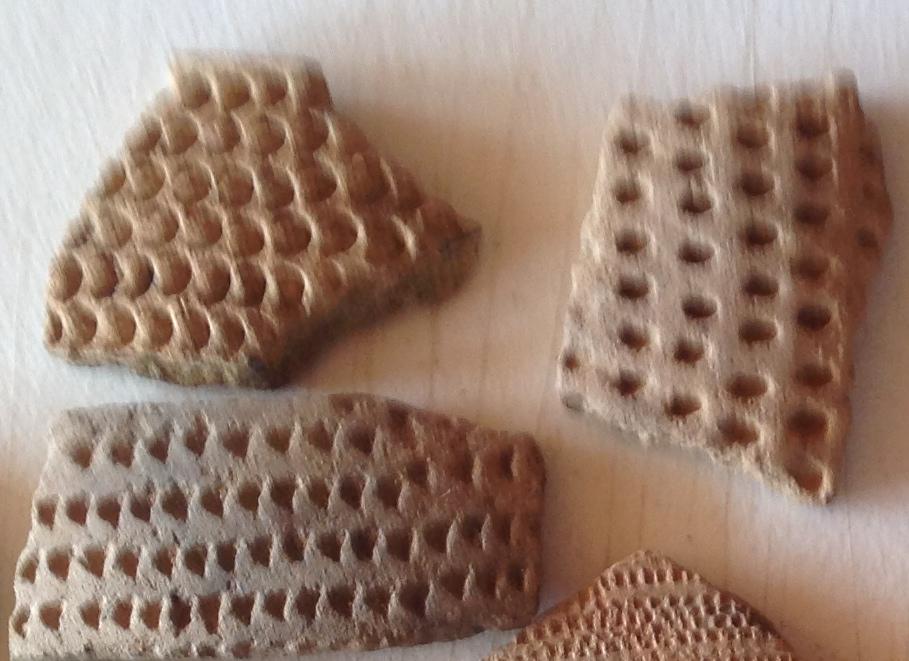
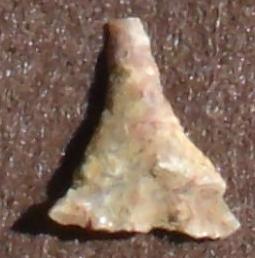
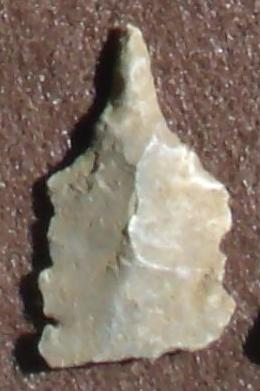
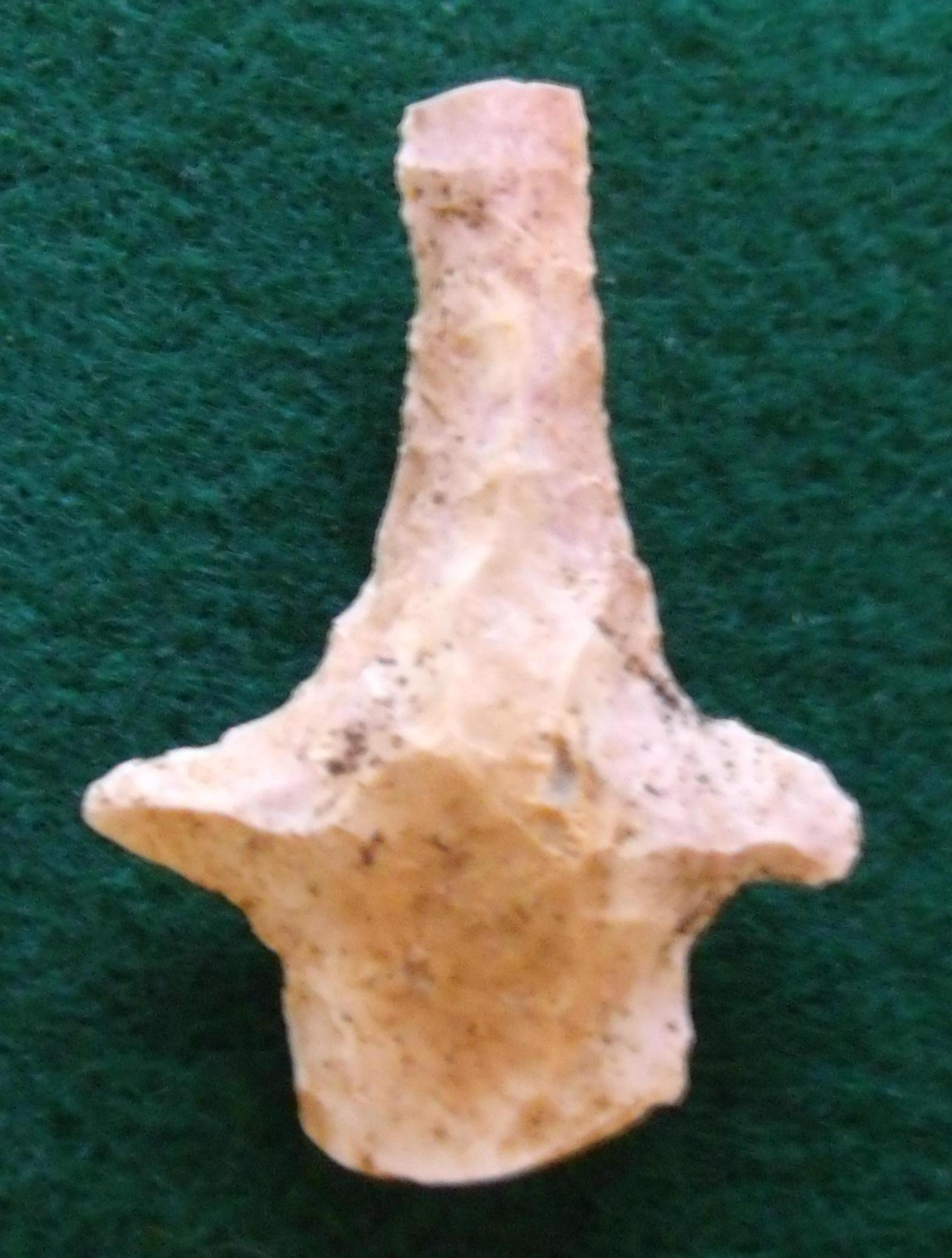
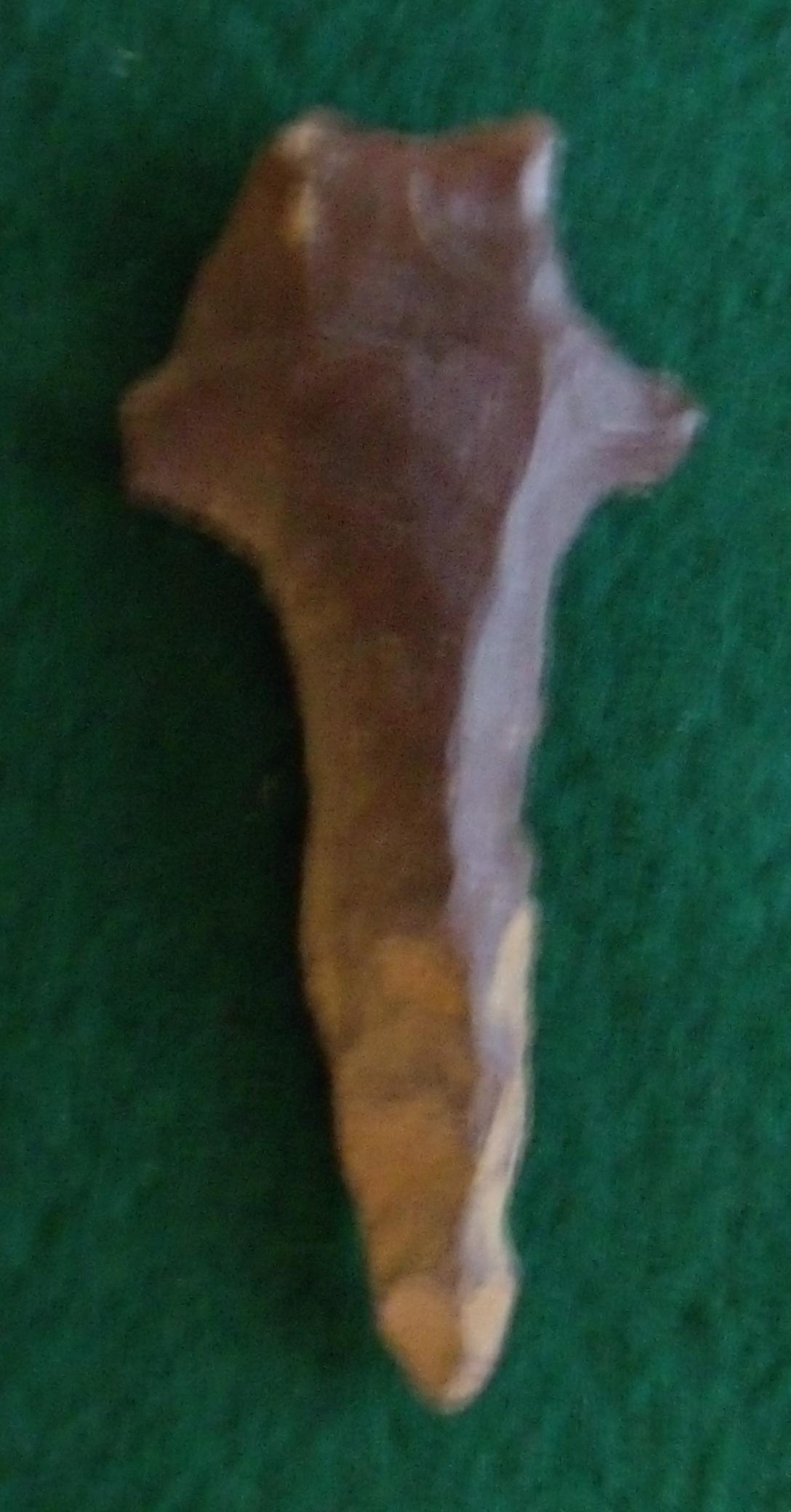
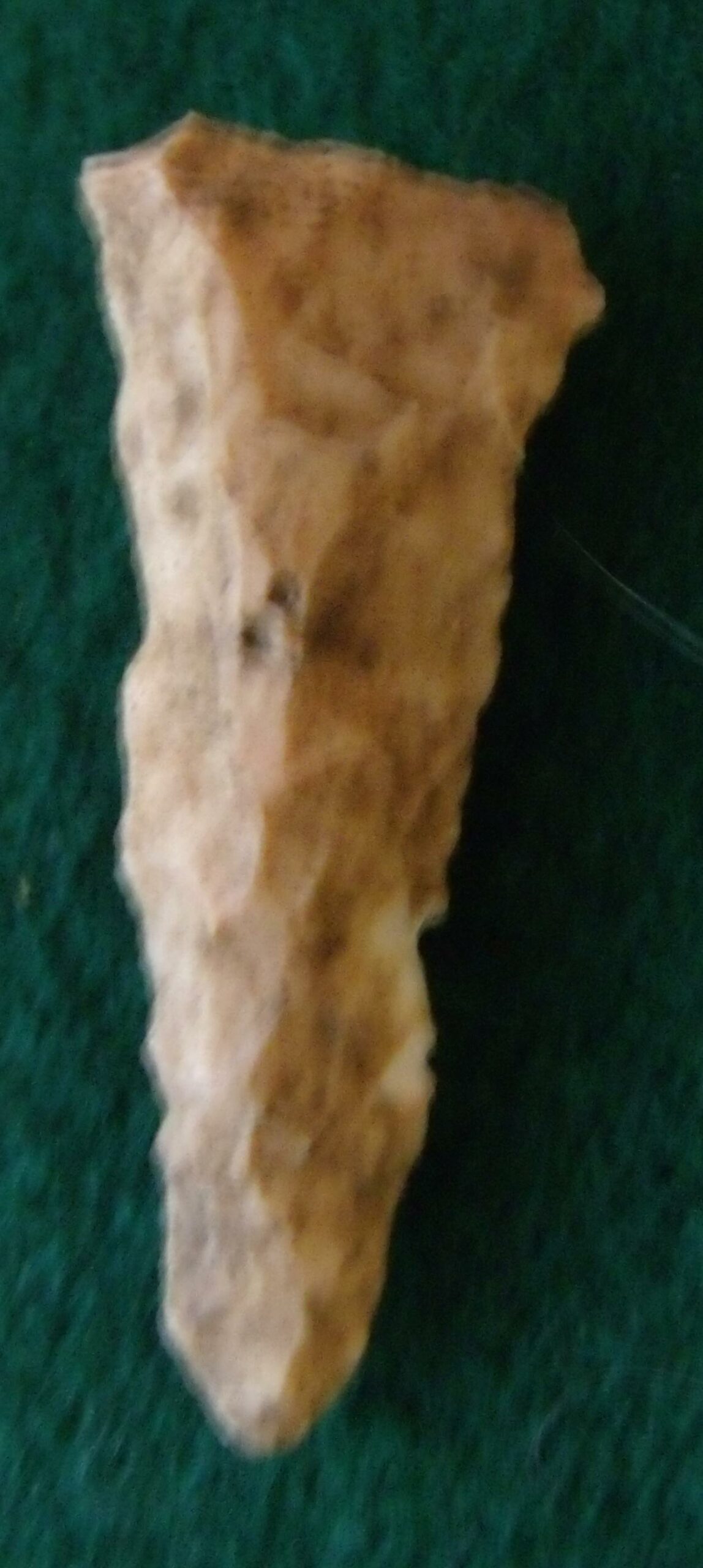
The 6 boiling stones along with Stallings pottery suggest that these are not the product of manufacture at the site complete with broken pieces and drills, but they are the product of use. The presence of micro-drills, used for perforating soft materials, also suggests a village context during this period. Cruciform drills could have been used for making steatite boiling stones, but most would have a flat distal end rather than a rounded end. The same could be said for the straight and expanded drills recovered from the site.
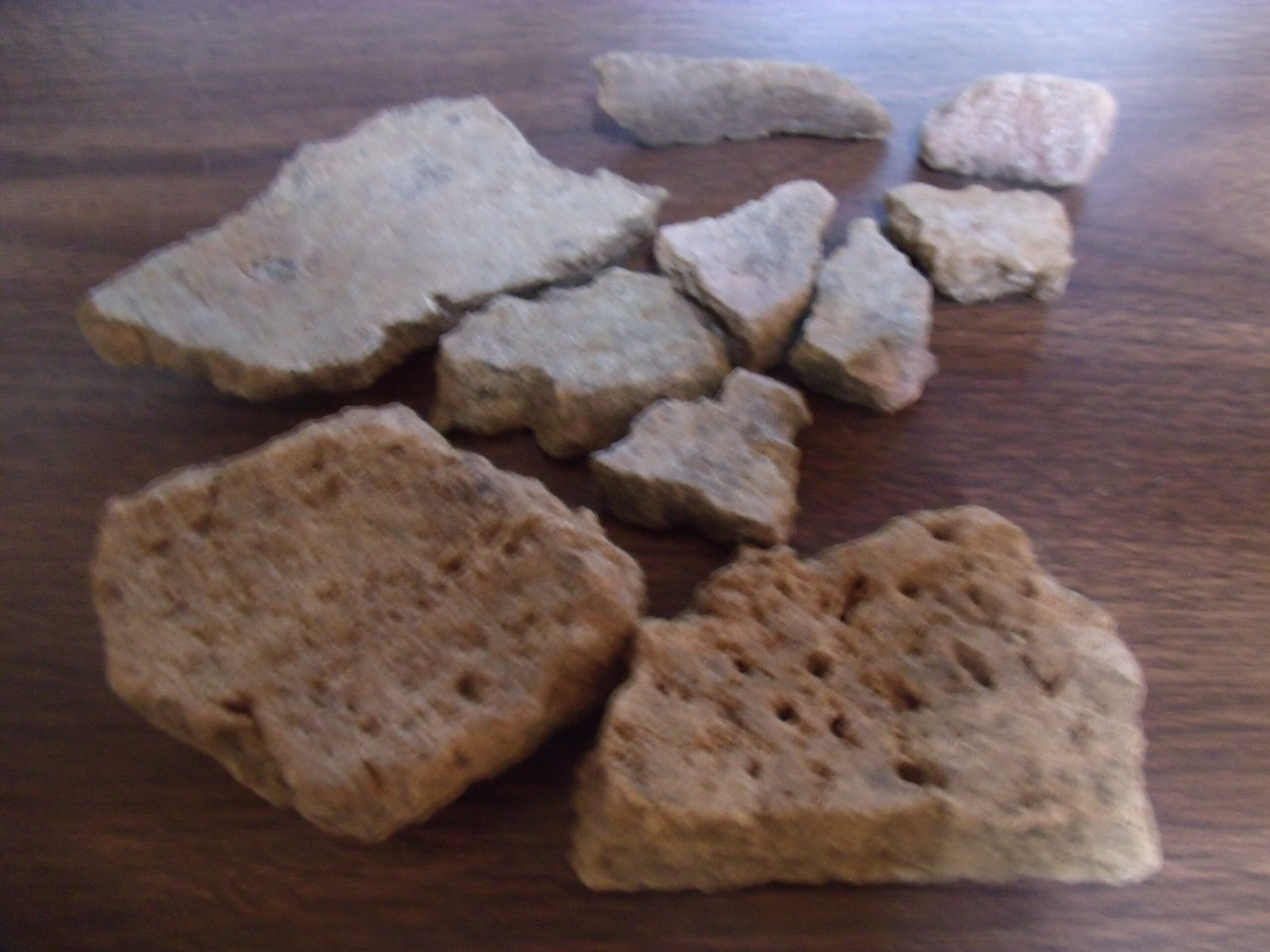
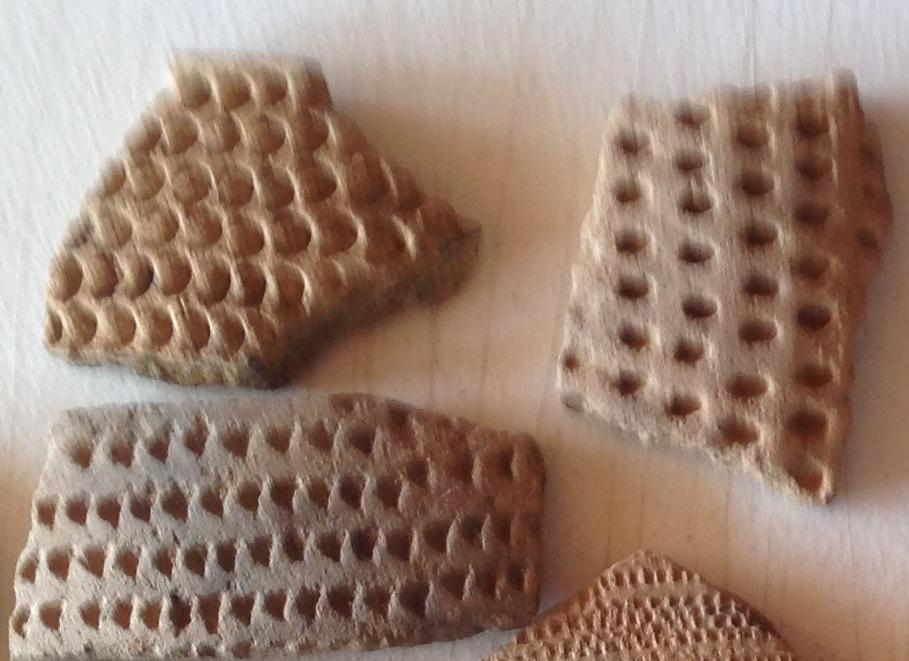
The pottery types that represented the Late Archaic recovered at the site included Stallings Plain and Punctated, and steatite bowl fragments. These cover a broad spectrum of Late Archaic life from the steatite industry to the early stages of fiber-tempered pottery bringing us to the threshold of the Early Woodland period.
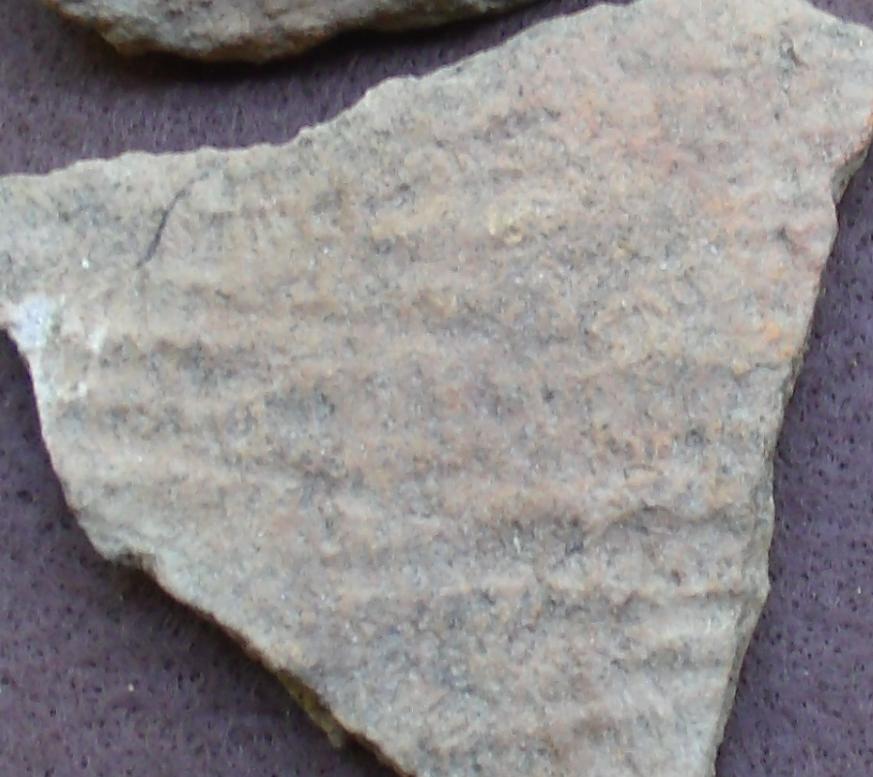
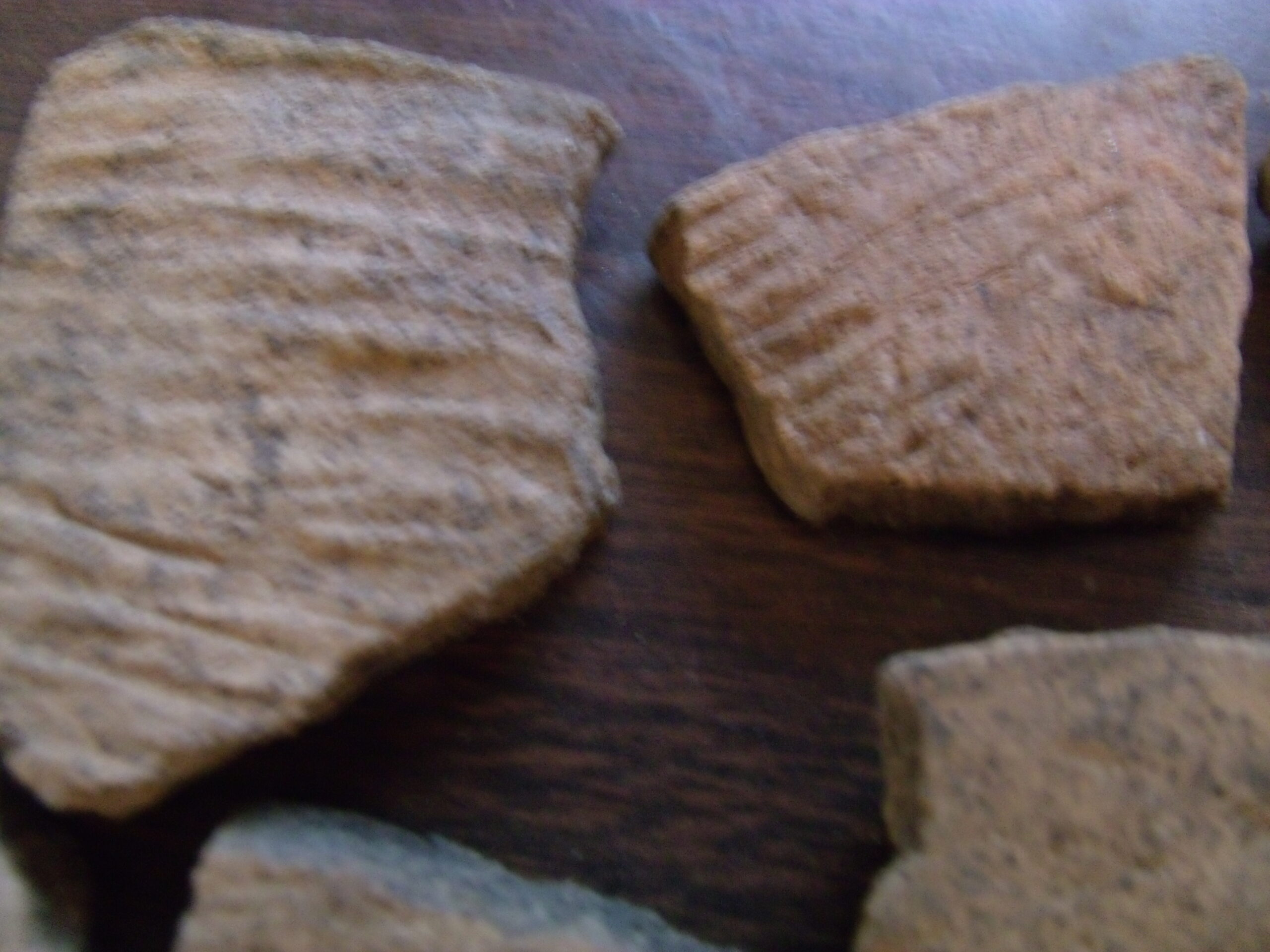
The Early Woodland period was a period of silence as only 6 sherds of Dunlop Fabric Impressed pottery was recovered from the site. Even these few sherds of Dunlap pottery may have appeared at or near the beginning of the Middle Woodland period given the 980 sherds of Deptford pottery recovered from the site. Deptford Plain (529 sherds) and Deptford Simple Stamped (432 sherds) were the dominant surface decorations in the site. This is not unusual as Check Stamped pottery (17 sherds) is a minority type in most sites and Linear Check Stamped pottery (0 sherds) is rarely seen in sites in central Georgia. The brushed types (2 sherds) are known, but are the rarest of all Deptford pottery. The Deptford Simple Stamped pottery was recovered at a depth of 20 inches at the site.
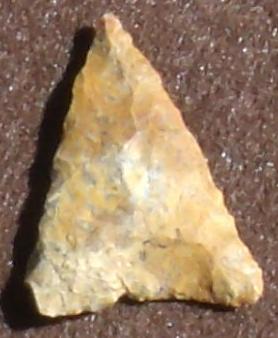

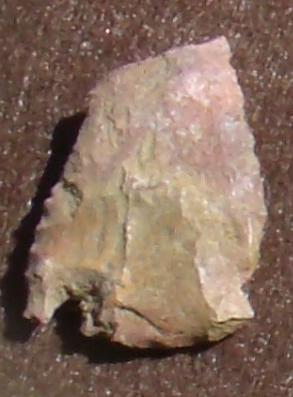
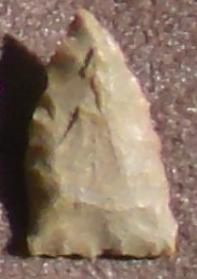
The increased activity at the site during the Middle Woodland period probably accounted for the number and variety of point types recovered from the site. Recoveries relating to this period included 3 Yadkin points, 1 Copena and 1 Copena Articulate point, 3 Greenville points and 1 Citrus point. The Greenville point dates between 2100 and 1700 B.P. and is often found in Middle Woodland sites in Georgia. These types are most closely related to Deptford and Swift Creek cultures, but at this site there seems to be a movement of people between these two groups.
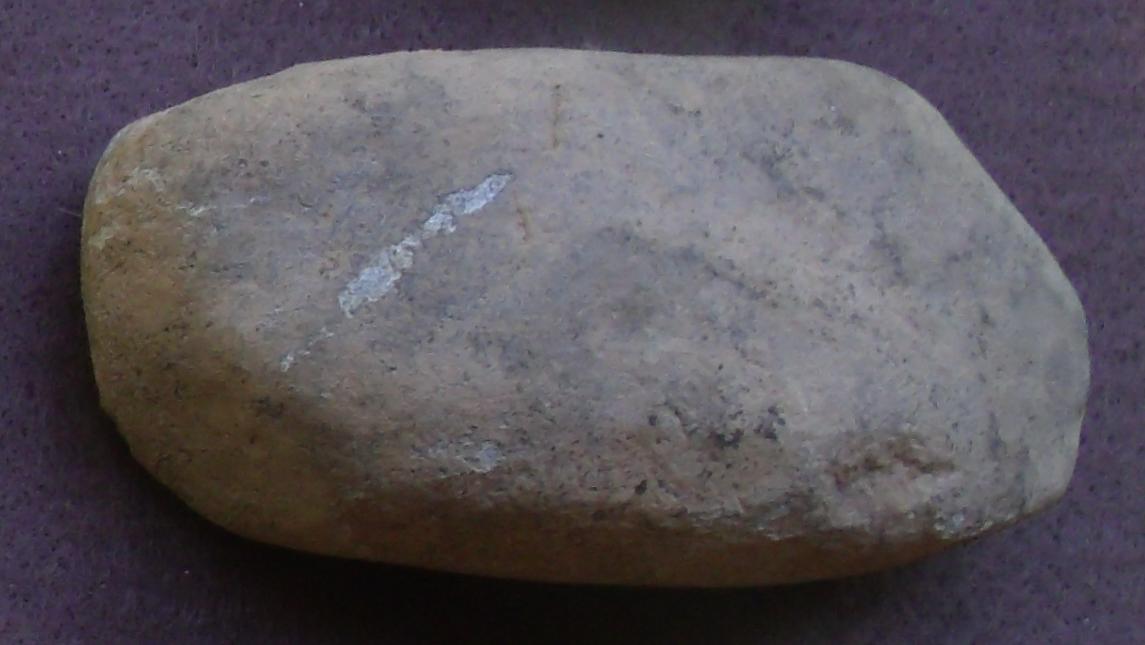
Tool forms that were used during this period included a splitting wedge recovered from the site. A splitting wedge is a tool used to separate materials like stone or wood. It can measure between 4 and 6 inches in length and is usually 2 inches thick and equal in height. It usually appears battered on the pole end and may be chipped or broken on the bit. The top is wedge-shaped, but the sides are square and smooth. These artifacts have been recovered in a few areas, but are rare. In most instances, an axe bit may have been used rather than a wedge.
Only four examples of splitting wedges are known from Georgia. I encountered one during an ID day at the Etowah Indian Mounds that was from northwestern Georgia. Several examples came from the Tabor Bluff site in Rockdale, Georgia. Tabor Bluff is a Middle Woodland period Deptford site. The only other example known to me was from the Minors Creek site that is a Middle Woodland period Swift Creek site, also in Rockdale County, Georgia. Finally, the 1 example from this site is most likely associated with the increased activity of the Deptford culture of the Middle Woodland period as well. I have been unable to find any references to this tool type in any professional archaeological report to date.
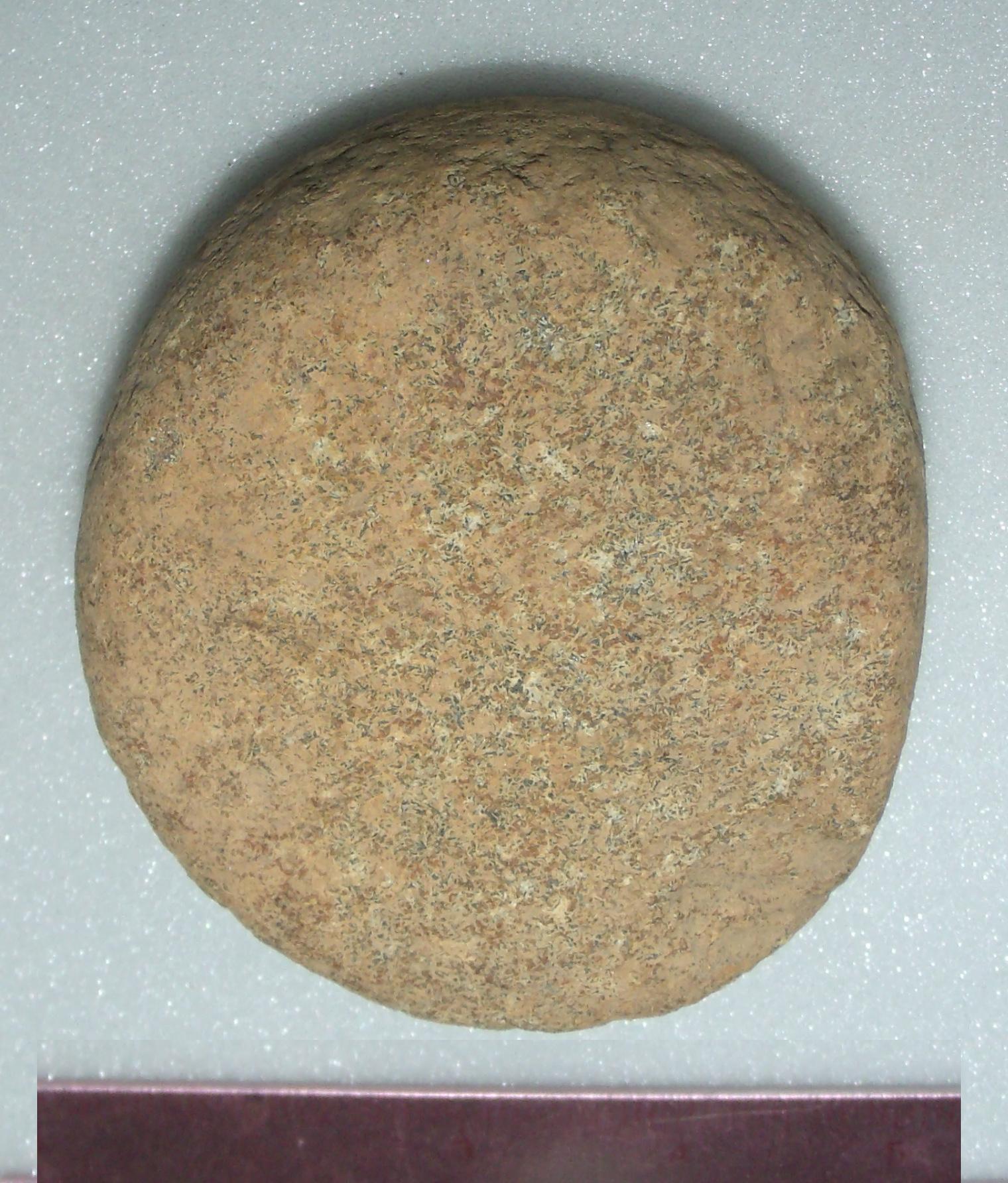
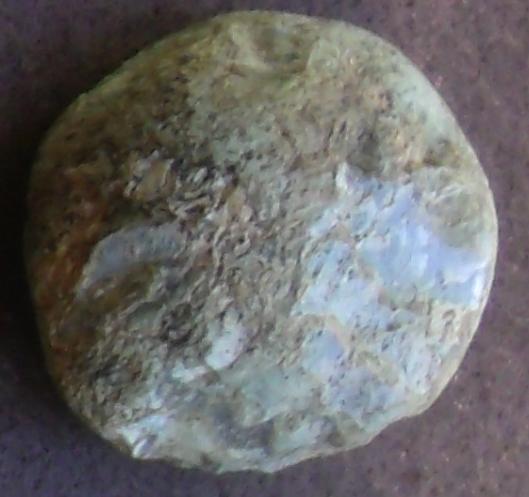
Additional tools that were recovered during Mr. Perry’s excavation of the site included 2 dimple and 3 pebble hammerstones. William S. Webb (1952) separated hammer stones into at least three categories: dimpled, pebble, and cylindrical hammer stones. Dimpled hammer stones (Coe’s type 3 stones, are those that have a shallow indentation in each side of the stone that has been purposely pecked into the stone to aid in griping it while working to remove percussion flakes and produce a leaf-shaped preform for later pressure flaking. These stones are typically rounded through striking chert blanks along the edges. The edges will be crushed from this work. The stones may be evenly thick or may be wedge-shaped to remove various sized flakes. Coe noted that in North Carolina, these stones are most often made from quartz or quartzite material and were found on the surface of the Hardaway site and not in the excavations.
Bennie Keel (1976) recovered 15 examples of this type at the Garden Creek Mound 1 site in North Carolina in an Early to Middle Mississippian period context. William Webb recovered 9 examples of “pitted river pebbles” from Ms80, the Harris site, in Marshall County Alabama. The examples were recovered from his general excavations that contained predominately Mulberry Creek Plain and Flint River Brushed pottery dating between Early and Late Woodland periods (roughly 500 B.C. to A.D. 1000). The Modoc Rock Shelter site contained one pitted hammerstone at the 10 to 21 foot level (average date of 3,657 B.C.) and one from Zone 5, Woodland to Mississippian periods.
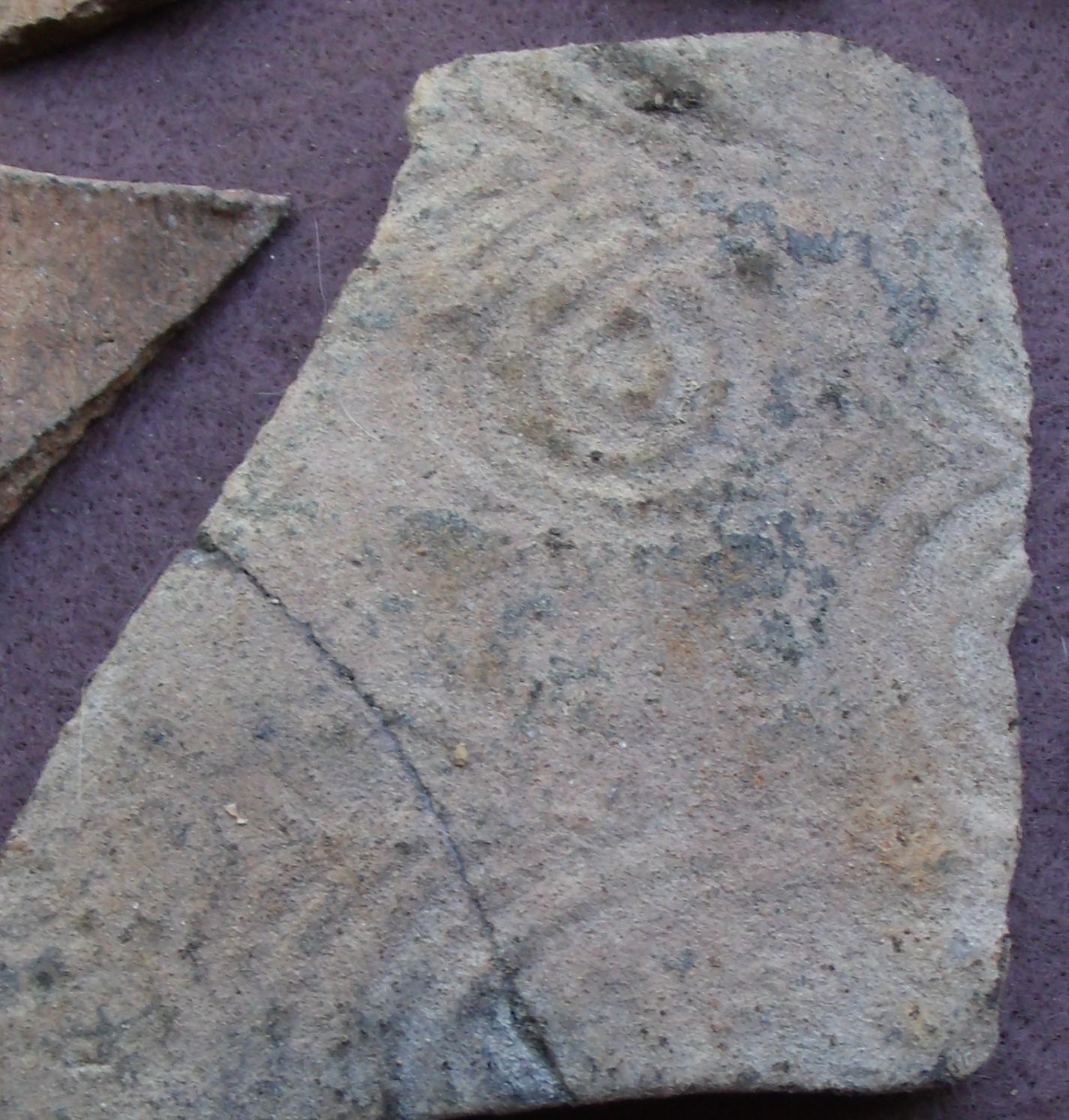
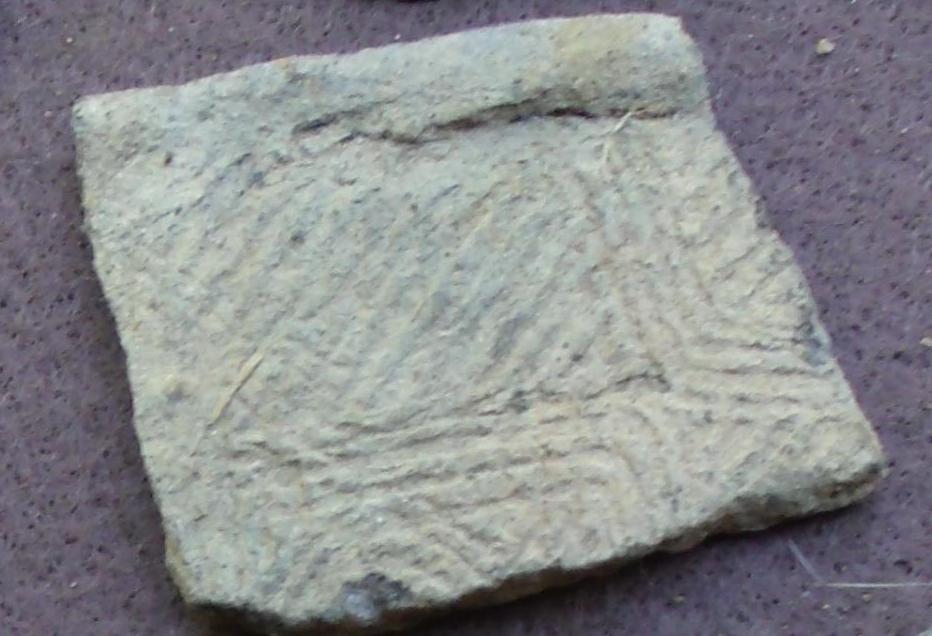
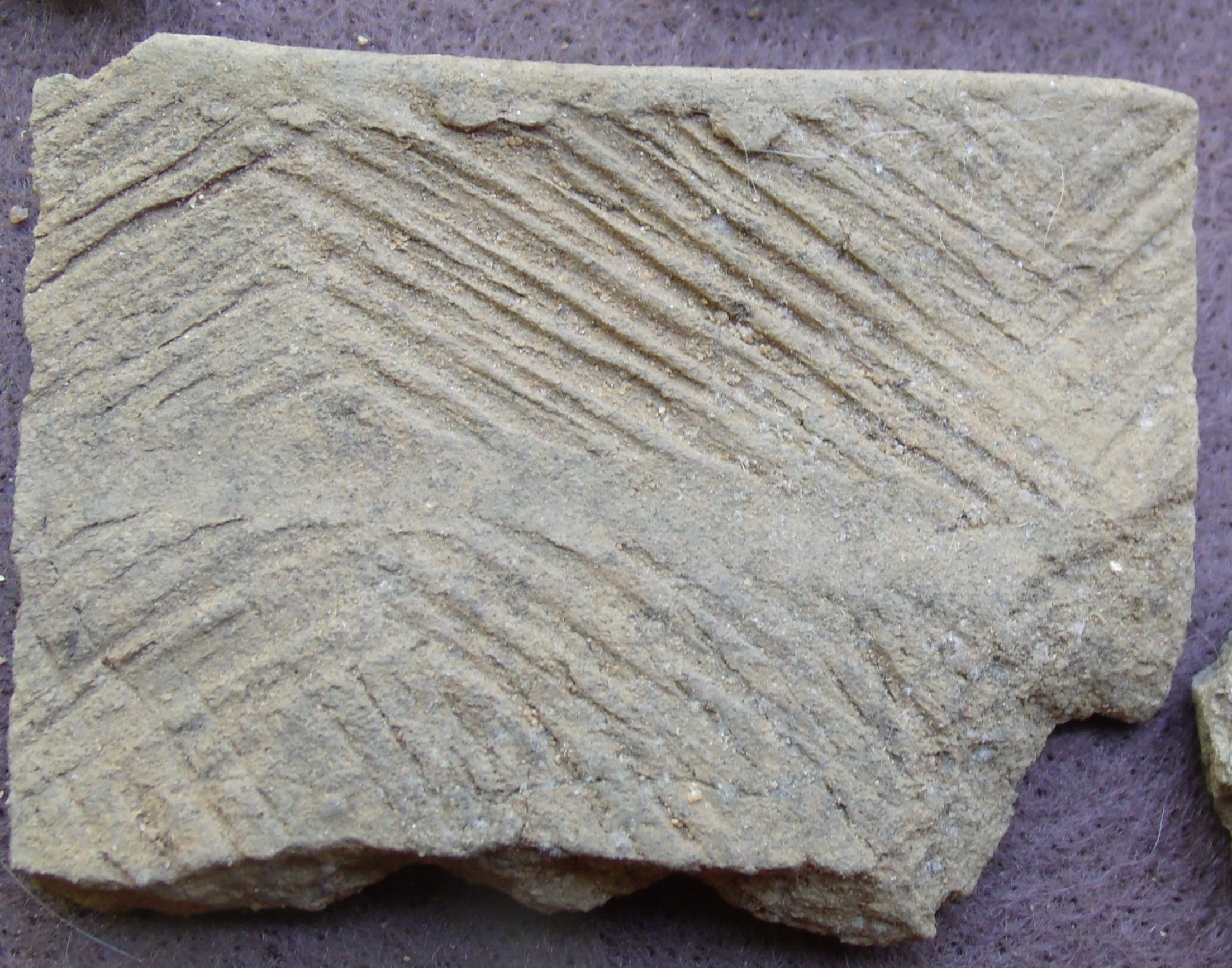
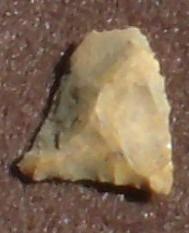

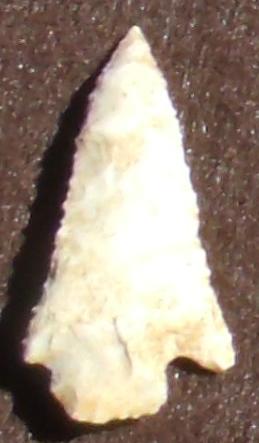
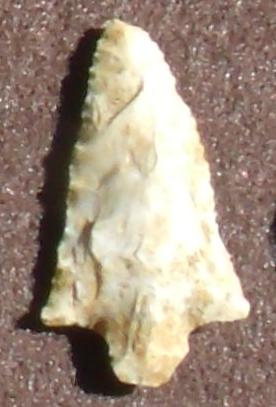
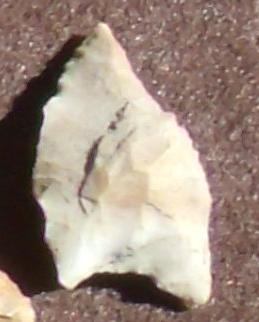
A small amount of Swift Creek Complicated Stamped pottery (20 sherds) and Napier Complicated Stamped pottery (4 sherds) were recovered from the site. These limited recoveries indicate that only a small amount of activity was present at the site during the Late Woodland period. This small presence may have accounted for the 2 examples of Hamilton Triangular points recovered by Mr. Perry. The Hamilton point averages about 31mm in length and dates between A.D. 100 and 500. Other point types used during the Woodland period that were recovered from the site included 1 Candy Creek point, 9 Stemmed Hernando points, that were recently named the Salkahatchie point by Tommy Charles of South Carolina, and one Swan Lake point known as a Jackson point in Florida. It is interesting to note that the point types from this period had a distinctly Florida influence, suggesting that there may have been some ties to Florida sites. The Deptford and Swift Creek pottery types would have been indistinguishable from those same types in Florida; however, no St. Johns pottery was recovered from the site even though it was heavily used in Florida during this period.

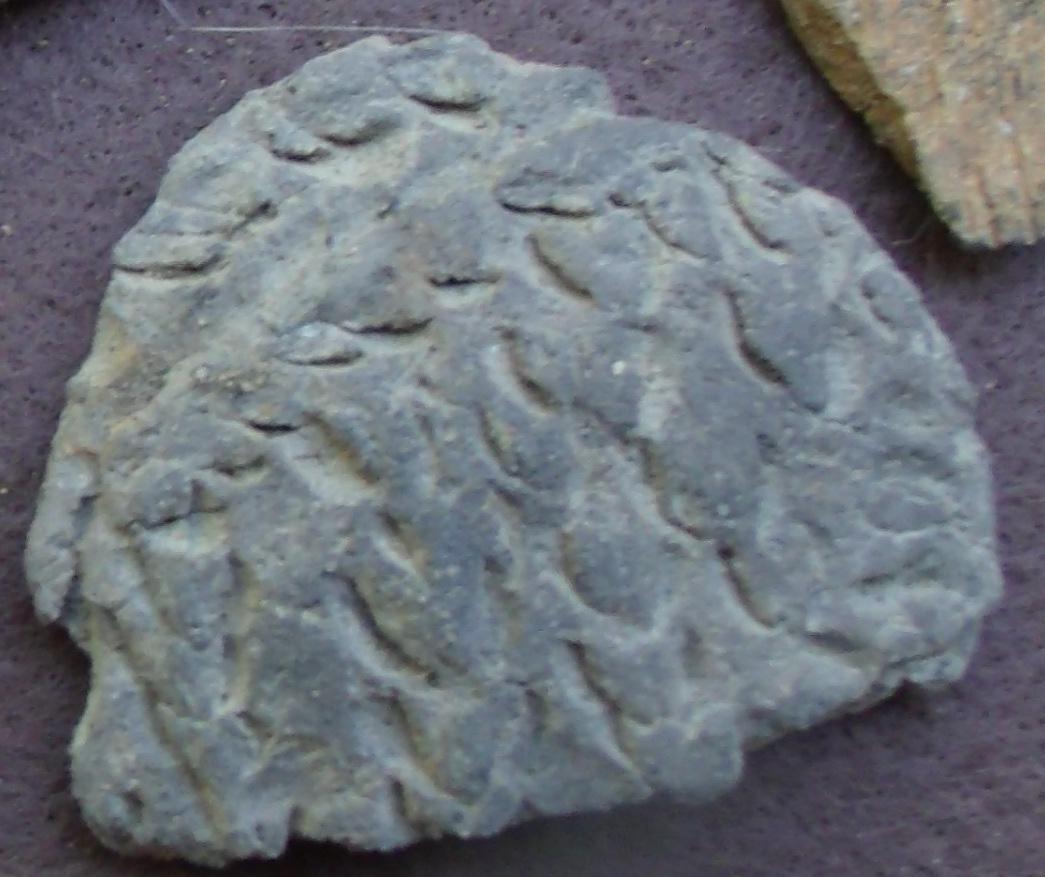
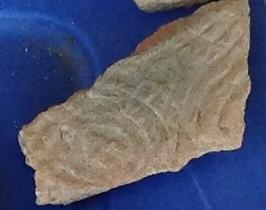
The Early and Middle Mississippian periods first saw evidence of the Etowah people who brought both Etowah Block Stamped (1 sherd) and Etowah Fingernail pottery (1 sherd) to the area. Later, during the Middle Mississippian period, the Savannah culture brought with them their Check Stamped (16 sherds), Cord Marked (28 sherds), and Complicated Stamped pottery (51 sherds). The Etowah people sent their potters to many areas of Georgia, thereby spreading their influence and belief system far and wide. The Savannah culture remained dominant over most of central Georgia throughout the Middle Mississippian period and their concentric circles, figure 8, nested diamond and figure 9 stamp patterns are widely recognized. Savannah Check Stamped patterns are difficult to distinguish from Deptford Check Stamped patterns, especially when the two are found in the same site.


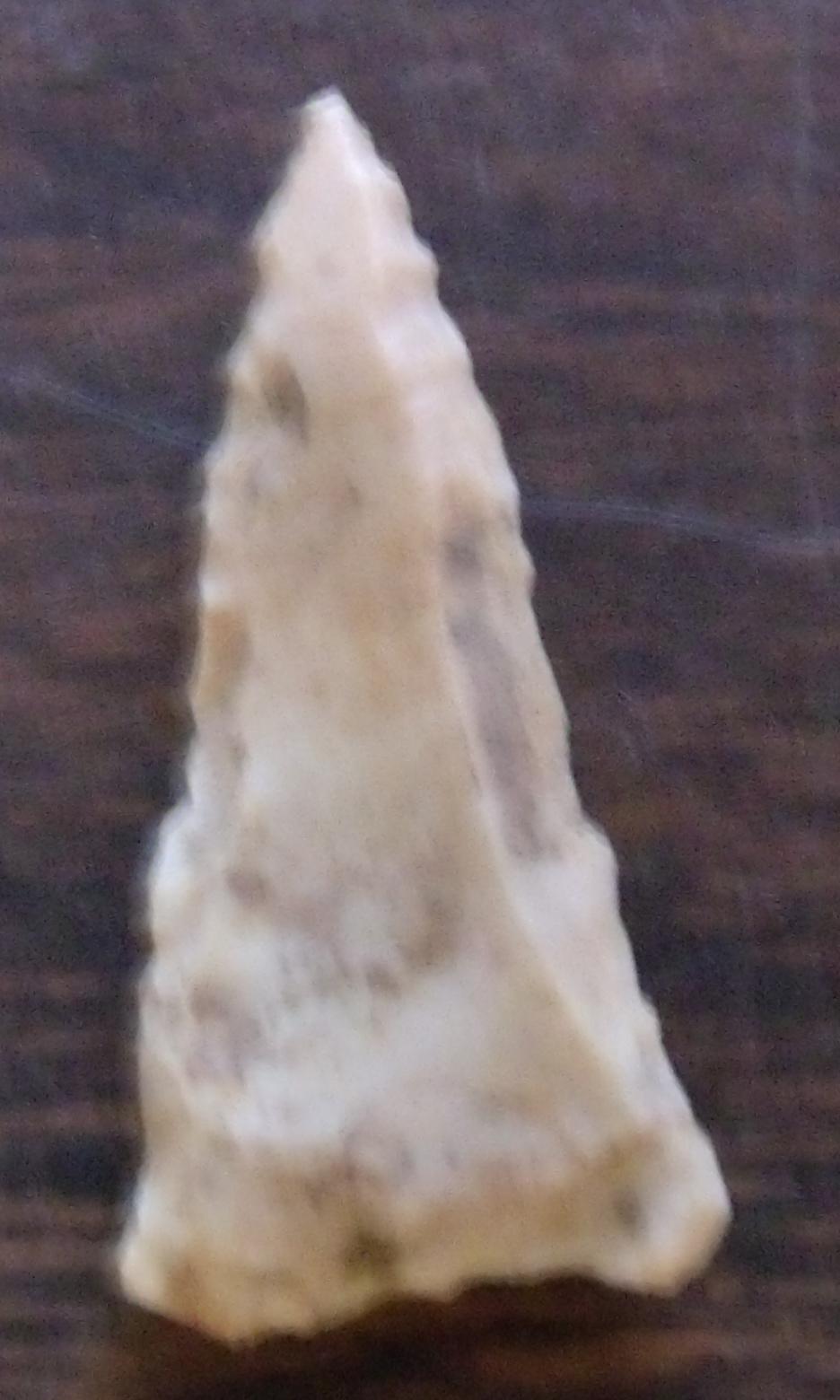
The Middle Mississippian period may have also introduced the Madison point to the site. A total of 16 Madison points were recovered, but not all of them may have come with the Middle Mississippian period as they continued to be used from A.D. 800 to at least 1700. Madison points differ from Hamilton points (also known as Late Woodland Triangular points) in that the Madison averages 20mm. in length while the Hamilton averages 30mm in length.


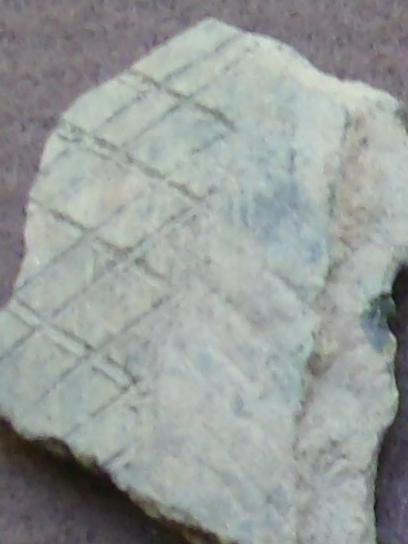
The Late Mississippian Lamar culture continued to expand its influence on the site. A total of 443 sherds of Lamar pottery were recovered from the site including Bold Incised, Plain, and Complicated Stamped types. The vast majority of this pottery was recovered at the 6 to 12 inch level of the site. In addition to the Lamar pottery, 1 sherd of Morgan Incised pottery was recovered. Morgan Incised pottery is named for Morgan County, Georgia where it was first recovered by Dr. Mark Williams. It is also a Late Mississippian pottery type.
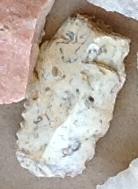

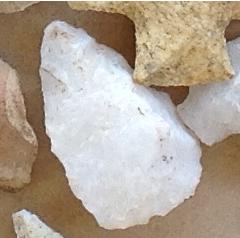
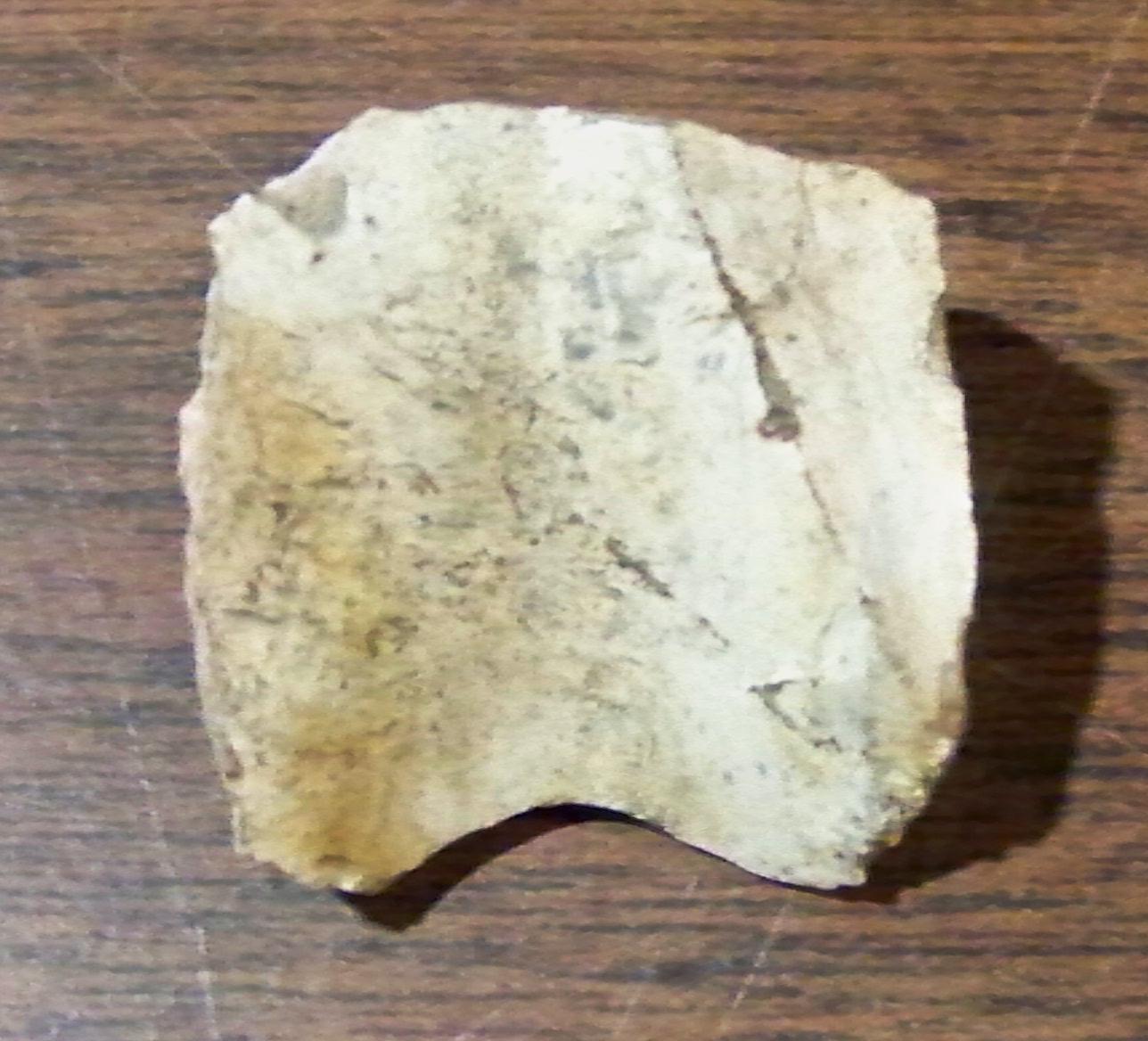
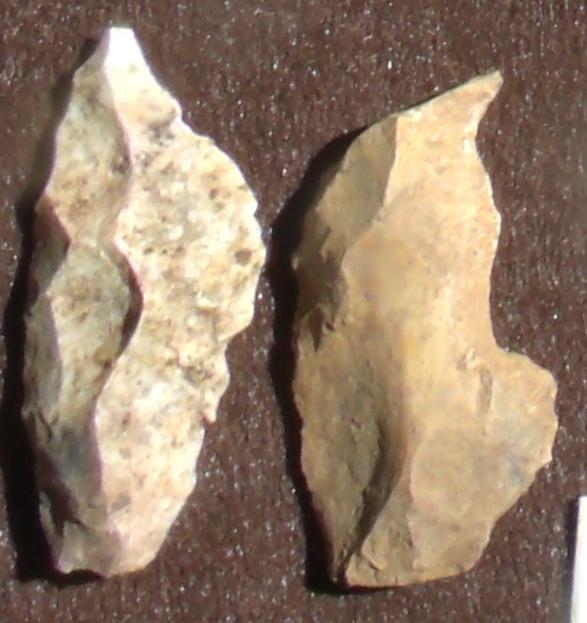
Several tool types were recovered that reflect the Middle and Late Mississippian period way of life. Several of these tools may have also been the product of earlier periods as their period of use was extensive. These tools include Utilized Flake Knives (1 example), Denticulates (2 examples), Backed Blade (1 example), Ovate Knives (5 examples), Utilized Flake Knives (7 examples), Spoke Shaves (2 examples), Gravers (2 examples), and Abraders (1 example).
Utilized flake knives are percussion-made utilized flakes that often retain their bulb of percussion. They are unaltered, but show use as sharp cutting blades to be discarded soon after use. Examples of these blades were recovered at the Stanfield-Worley site where they were called Flake Knives. H. Trawick Ward (1993) referred to these knives as “utilized and retouched flakes” noting that they often display some amount of marginal retouching along the blade edges. Jerald Ledbetter (1995) notes that the retouch on these flakes was small and irregular localized flaking along the used portions of the flake. These were ad hoccutting implements.
At the Modoc Rock Shelter (Fowler and Winters 1956) they were recovered from Zones 2 and 3, dating as early as 11,924 B.P. Examples of these blades were also recovered 23 centimeters below the Clovis occupation at the Cactus Hill site, dating to 18,000 calendar years B.P. Amazingly, these simple, yet ancient tools continued to be used in the Historic period as Gordon Willey’s recoveries at Parish Mound 3 in Hillsborough County demonstrate.
Trawick Ward described his recovered Denticulates from the Guthrie site in North Carolina as both large patinated flakes with unifacial retouched denticulate edges as well as one example of a small quartz flake with a serrated lateral edge. The identifying feature in any of these percussion flakes is the straight, serrated edge along at least one side. Jerald Ledbetter illustrated one denticulate that measured 29 mm. in length and 20 mm. in length. These small tools are believed to be cutting tools.
Ward believed the patinated flakes to be Archaic in their origin while the quartz flake belonged to the Haw River phase of the site that dated between A.D. 1000 and 1300. At the Mill Branch sites, Jerald Ledbetter (1995) considered these tools as “expedient flake tools” with marginally modified edges that exhibit uniform flake removal alone one or more edges. Ledbetter’s “expedient” category included those that showed little systematic flake removal and those with deliberate retouch including utilized flakes, perforators, notched flakes, backed flakes, Denticulates, wedges, unifacially modified flakes, and blades. Flakes including denticulates from this site date to the Late Archaic period.
Bennie C. Keel defined these blades from a total of 28 that he recovered from the Garden Creek site in North Carolina. This blade type is made by flaking one edge of the blade while the opposite side of the blade is dulled by flaking that edge away to provide a safer edge for handling while working. Keel’s comments as well as the collection of 79 prismatic blades from that site (several of which appear to be dulled on one side) suggest that backed knives are primarily made from prismatic blades. He also noted that edge wear is rarely found on prismatic blades. The dulling on one edge and the flaking on the other prepares the prismatic blade for use. The Backed blade is intended as a cutting tool rather than a scraping tool.
Bennie C. Keel (1976) described these as “small ovate knives,” stating that they had straight to slightly excurvate blade edges and rounded basal edges that were somewhat pointed. The distal ends of Keel’s examples were pointed at an average of about 60 degrees. The blades were percussion made, averaged between 32 and 42 mm. in length, 15 to 24 mm. wide, and 8 to 13 mm. thick. All of Keel’s examples, of which there were nine at the Garden Creek Mound 2 site, were made of quartz.
Keel’s Garden Creek recoveries dated with Mound 2 and the Swannanoa and Pigeon series pottery it contained between 200 and 400 A.D. Keel noted that Faulkner and Graham[i] referred to similar blades as “bifacial knives” in their work at the Nickajack Reservoir in Tennessee. During the Central Georgia Surface survey, 39 examples of Ovate Knives were recovered. The largest group of knives recovered at any one site was at the Rutland Lower Field site where five examples were recovered. That site had a substantial Late Archaic component.
The original definition given by David L. DeJarnette, Edward B. Kurjack, and James W. Cambron at the Stanfield-Worley site was “a concave side scraper.” H. Trawick Ward further defined this tool at the Jenerette site as a large reduction flake that has been worked along at least one edge to form a broad (15 to 17 mm.), shallow (3 to 4 mm.) concavity that is steeply beveled. The consensus of most archaeologists is that spokeshaves are made for working wood in a manner similar to the way a wood plane or draw knife might be used.
Ward recovered three examples of spokeshaves from the Jenerette site. The other five sites where he recovered these tools contained only one example, all of which dated between the Late Woodland and Historic periods. The Central Georgia Surface Survey recovered only eight examples of spokeshaves and no site contained more than two examples. The variety of materials in those sites made any cultural context indistinguishable. Bennie Keel (1976) recovered one example from the Warren Wilson site in a historic Cherokee context, but William Webb (1951) did not recover any examples of spokeshaves from the Middle Woodland Copena and historic Creek sites in the Guntersville Basin of Alabama. The spokeshave was not listed among the Clovis age tool kit at the Gault site in central Texas, but one example was recovered by Carl Yahnig at the Little River site in Christian County, Kentucky. The example was an additional feature flaked into the side of a Clovis age end scraper.
At the Stanfield-Worley site in Alabama, site investigators did not define the graver as an individually designed tool type, but as an additional appendage on an existing tool or blade of any sort. The graver is a purposefully designed small spur that is pressure-flaked into some portion of another tool form or small percussion flake. The use of the spur, as H. Trawick Ward has defined it (1993), is an engraving or cutting tool also used to score bone or antler, allowing the material to be snapped off for further use.
Ward’s recovery of nine graver examples was at the Holt site in North Carolina where thousands of Haw River pottery sherds were also recovered that dated to the Late Woodland period between A.D. 1000 and 1300. Bennie C. Keel (1976) recovered only one graver example from the Garden Creek site in North Carolina. The example came from mound 2 that also contained Swannanoa and Connestee pottery from the Early to Late Woodland periods dating between 600 B.C. to A.D. 800.
The Central Georgia Surface Survey saw few gravers in any site and then only in sites dominated by Archaic and Woodland lithic assemblages with only 19 total examples from 162 sites. Perhaps the oldest example of a graver came from the Cactus Hill site in Virginia where Clovis and pre-Clovis material was dated between 12,700 and 13,200 years before present. From the Clovis material, one graver underwent blood residue analysis with a positive result for deer antiserum.
It is interesting to note that of the 30 Proto-Historic to Historic sites excavated by William Webb in the Guntersville Basin, not one single graver tool was recovered yet several antler projectile points were recovered. Ward gives us our best look at graver usage during the Historic period at the Jenrette site in North Carolina where four examples were recovered. The gravers were made from thin metavolcanic rock flakes with small, triangular projections along one side. The Jenrette site dates between A.D. 1600 and 1680.
As defined by T.M.N. Lewis and Madeline Kneberg (1995), the difference between an abrader and a hone is the presence of grooves, broad or narrow. The “Grooved Whetstone” as Lewis called it, was made from fine grained, buff-colored sandstone. The color may have been true for central Tennessee, but it has little to do with this tool elsewhere. Lewis further described it as having one or more grooves. Narrow grooves may be indicative of grinding the edge of a blade to prepare a platform for knapping while broader grooves like the one worn in the sherd of pottery above (center) may have been for smoothing or polishing bone. Antonio Waring (1977) regarded these ceramic sherds as abraders recovered at the Refuge site in Jasper County, South Carolina. Jerald Ledbetter (995) defined abraders as coarse-grained rocks with evidence of polishing over one or more faces or pronounced grooves. Ledbetter identified Coastal Plain sandstone as the material used for these tools just as Lewis had identified the fine grained, buff-colored sandstone of Tennessee.
Certainly one of the oldest recoveries of an abrader was at the Cactus Hill site in Sussex County, Virginia where Joseph McAvoy reported finding one example at the Clovis layer. A second ancient find was at the Modoc Rock Shelter at the 10 to 21 foot level with a radiocarbon date of 7922 B.C. +/- 392 years. These simple tools have continued to find their way onto the archaeological record, but little mention was made of them. Richard S. MacNeish (Griffin 1952) mentioned and illustrated an abrader with many fairly parallel narrow cuts in it, referring to it as a “sinew stone” from an Owasco village and part of the Late Woodland period in New York. H. Trawick Ward listed ground stone artifacts from several historic sites including celts, manos and the like, but never once spoke of the tools used to grind them. T.M.N. Lewis and Madeline Kneberg (1995) mentioned them in passing at the Hiwassee Island site, remarking that they were “of no special significance.” William Sears (1951) mentioned finding three examples of what he called abraders from the Cox site (Ja176), block 2, in Jackson County, Alabama that appeared to have belonged to the Middle Woodland period. Two of the examples were reportedly made of “flint” and one of “chert,” but Webb gave no further explanation of the odd materials used or of their use.
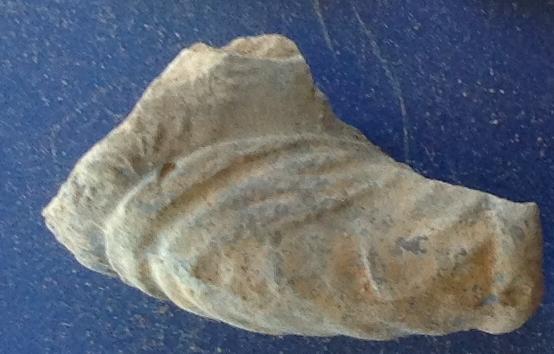

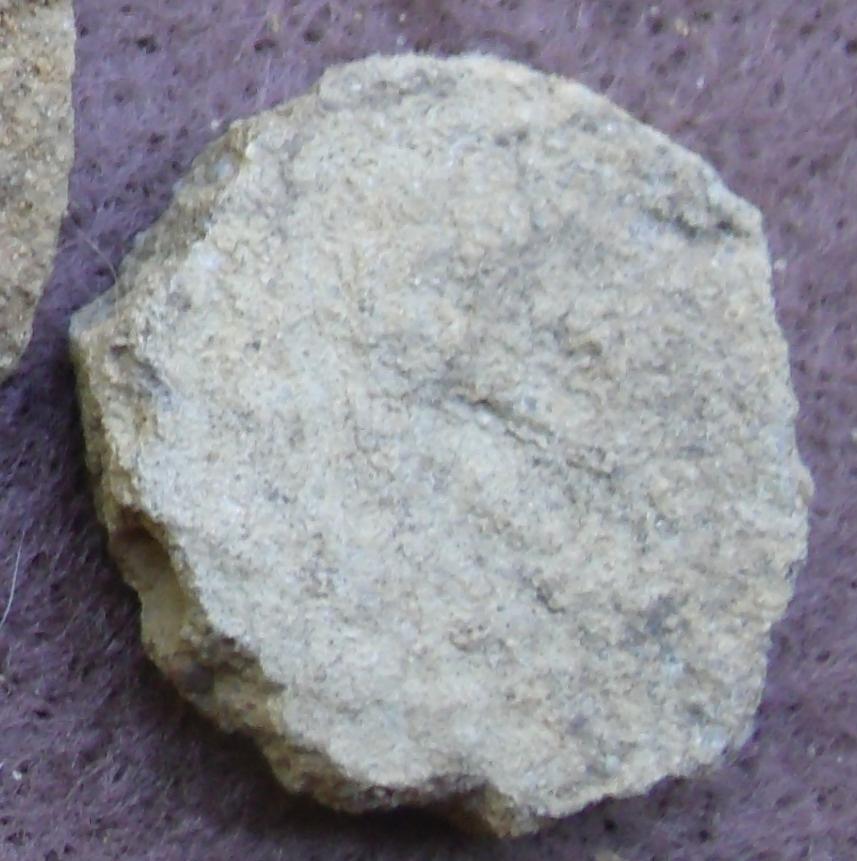
Middle and Late Mississippian village life enjoyed a variety of activities. Pipes like those seen here were not smoked on a day-to-day basis, but were reserved for times of celebration, ceremony, and compromise. When communities gathered for religious ceremonies or celebrations, people would gather for pipe smoking and gambling. A variety of games were played, but the favorite game was Chunky. Chunky or Chunkey, chenco, tchung-kee or the hoop and stick game, is a game of Native American origin. Chunkey was played between two opponents, one rolling a stone disc across the ground and the other throwing a spear in an attempt to place the spear as close to the stopped stone as possible. The game would often continue until both players were exhausted. The game originated about 600 CE in the Cahokia region that is now near St. Louis, Missouri. It continued to be played throughout North America in one form or another long after the decline of the Mississippian period about 1500 CE. Early ethnographer James Adair translated the name to mean “running hard labor.” The intention of the games seemed to be the gathering of large groups of neighboring villages and even visitors. Gambling was frequently connected to the game, with some players wagering everything they owned on the outcome of the game. Losers were even known to commit suicide.
The pottery game disc at the right is a gambling token much like the poker chip might be used today. The study of discoidal is anchored in the Mississippian culture that flourished from 900 to 1400 A.D. The core area of the Mississippians influence was in the Central Midwest along the Mississippi River floodplain, extending from Cahokia, Illinois to Moundsville, Alabama. However the Mississippian primary influence spread from North Dakota to the tip of Florida and from Western Pennsylvania to Texas. Because of the importance of stone discoidals as a game piece, some scholars have associated all discoidals with gaming. Because Native American women also played games of chance, pottery discoidal are considered by some scholars to be game pieces or dice that were utilized by females (DeBoer 1993). Designating ceramic discoidals as game pieces may have resulted in their demise as an artifact; often they are not mentioned in site reports. In some sites these small discs are recovered by the hundreds near mounds or ball fields where other games were played.

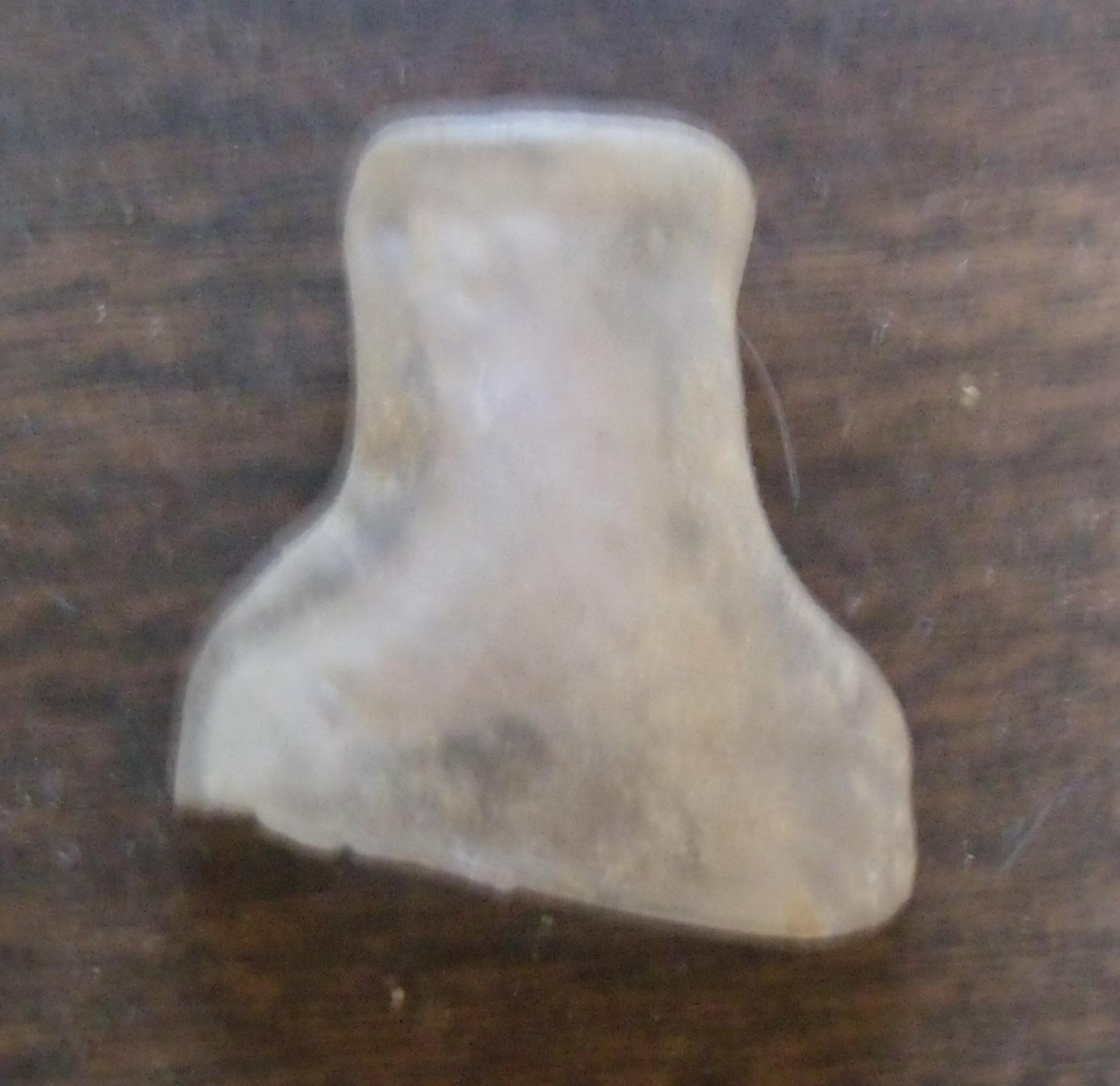
The Creek people of central Georgia moved into the area from northern Alabama in large numbers in the mid 1600’s. There was no evidence of Creek settlement at this site, so we learn nothing about the lifeways of the Hitchiti, Yuchi, Shawnee, or Yamassee that lived in central Georgia at the time. There is evidence of white settlement sometime between the end of the Late Mississippian period and modern times. Because the land on which the site rests was not ceded to the English until the mid 1700’s.
One of the evidences of white settlement in the area was a 50 caliber musket ball. Flintlock is a general term for any firearm that uses a flint striking ignition mechanism. The term may also apply to a particular form of the mechanism itself, also known as the true flintlock, that was introduced in the early 17th century, and rapidly replaced earlier firearm-ignition technologies, such as the matchlock, the wheellock, and the earlier flintlock mechanisms. The true flintlock continued to be in common use for over two centuries, replaced by percussion cap and, later, the cartridge-based systems in the early-to-mid 1800’s. The property on which the site sits has been in Mrs. Perry’s family since that time, but black powder enthusiasts were allowed to shoot on the property in 2000 and this musket ball may actually be one of theirs.
The melted white glass bottle appears to be a mouth-blown druggist bottle with a collared ring finish style. It appears to be a product of the early 20thcentury. This finish type was only used on druggist type bottles from about 1900 to 1925.
These short glimpses of the past 10,000 years offer a rare look at the lives and cultures that have visited this small parcel of land along a small spring in Washington County, Georgia. From the first family that lived in a small hut and cooked over an open fire to the Perry family, it has been a place called home that offered warmth and security to those that lived there.
[i] Faulkner, Charles H., and J.B. Graham
1966 Highway Salvage in the Nickajack Reservoir, Department of Anthropology, University of Tennessee